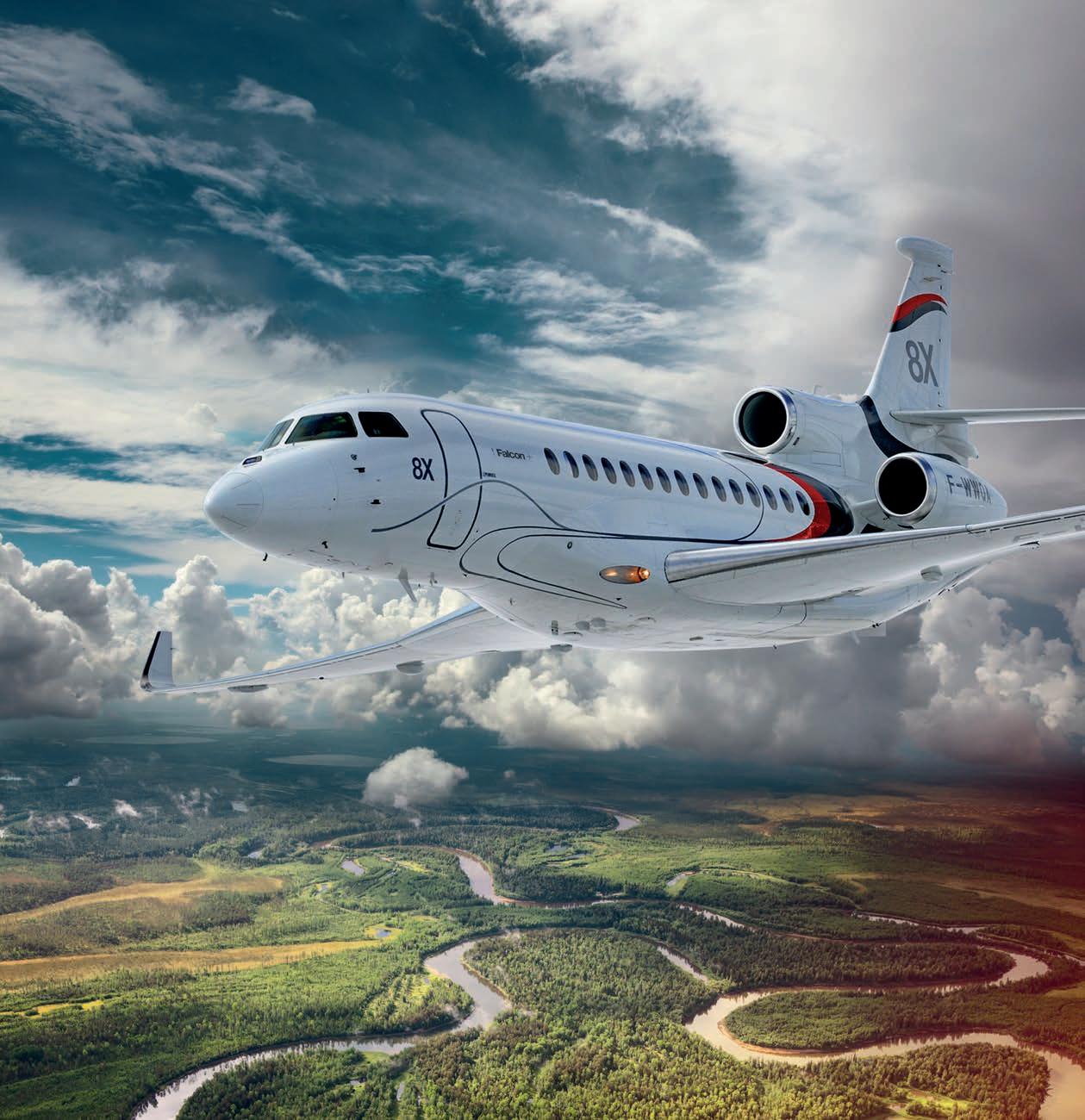Special Report: Pilot mental health


Special Report: Pilot mental health



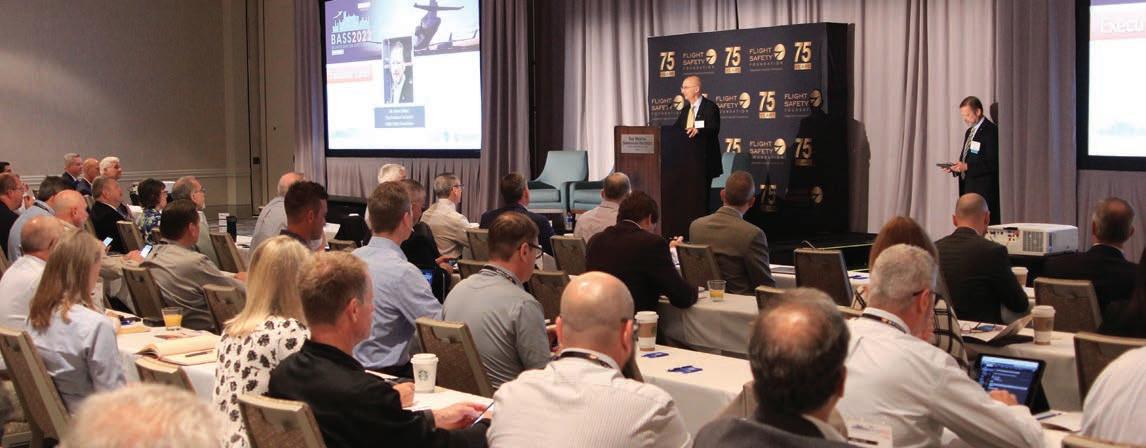
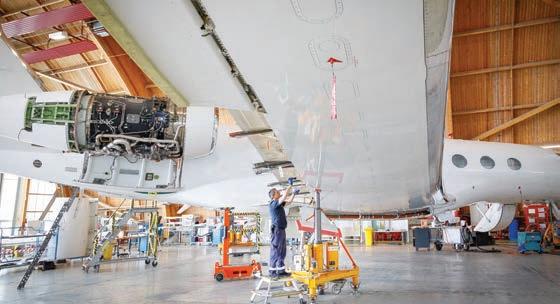



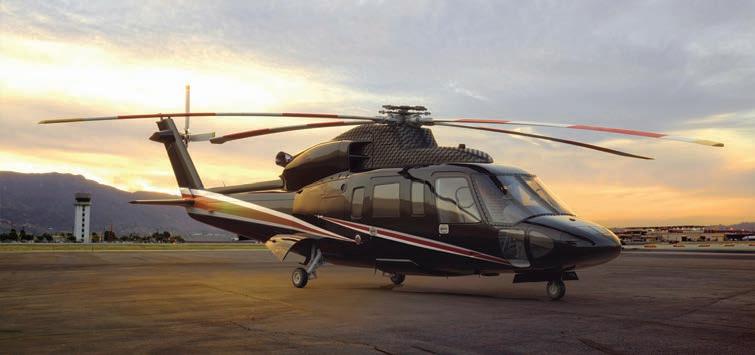 BY MARK HUBER
BY MARK HUBER
Fractional jet provider Flexjet is launching a private helicopter division that will integrate Sikorsky S-76 operator Associated Aircraft Group (AAG), which was acquired last year by Flexjet parent Directional Aviation unit OneSky Flight. Service will begin with 12 helicopters finished in the Flexjet livery and interior and “scale up from there as necessary,” according to the company.
AAG was founded in 1989, purchased by Sikorsky in 1999, and used to launch the OEM’s fractional shares program. It operated primarily in the New York City area.
Flexjet helicopter operations will be seasonally located in the Northeastern states and in Florida throughout the year, connecting airports and city centers and shorthaul regional destinations. Flexjet also said it would provide complimentary helicopter hours to its Gulfstream G650 fractional owners and sell add-on fractional, lease, and charter access to the medium twin S-76s.
The new division will deliver on-demand regional transportation and last-mile transport for Flexjet aircraft owners traveling from airports to their final destinations. Flexjet called the service “a unique
door-to-door travel solution not available through any other provider in the U.S.,” and said it expects the helicopter division to grow in the U.S. and Europe over the next five years as the worldwide demand for point-to-point vertical aviation increases.
Flexjet’s Eli Flint will lead the new division as president and will be joined by a staff of nearly 50 former AAG sales managers, mechanics, ops team members, and pilots.
“This distinguishes us as the only operator in our industry to offer seamless travel,” said Flexjet CEO Michael Silvestro. “Today, more travelers are seeking an alternative to crowded forms of transportation—opting instead for easier, safer, and less stressful options from beginning to end.”
The helicopter division will use a safety management system through Baldwin Aviation that includes a preflight risk assessment program, hazard reporting system, and customized landing zone survey for off-airport operations, for additional flexibility. It will use the same operational oversights for weather and performance planning as Flexjet’s jet program. z
Sports car manufacturer Porsche will help Eve bring its four-passenger eVTOL aircraft to what is expected to be a mass market for urban air mobility (UAM). Porsche Consulting will help Eve develop a supply chain for high-volume rates of production, as well as a strategy for global manufacturing and logistics for the vehicle that is expected to be certified in 2025. The companies will look at how the production of eVTOL aircraft could be scaled up and use a distributed production network to meet demand anticipated in cities around the world.
Embraer has previously co-marketed its Phenom 300 light jet with Porsche cars. The Porsche Design Studio has been involved in interior styling for several private jets.
Kinston, North Carolina-based charter provider flyExclusive is equipping its fleet of Cessna Citation Excels with Garmin G5000 flight decks that are expected to increase e ciency, reliability, and safety. Dallas-based Force Aviation will install the G5000 flight deck in 10 flyExclusive Excels. The Part 135 operator said the new flight deck will not only serve to modernize its Excel fleet but also increase dispatch reliability.
Inmarsat is upgrading its network to increase broadband satcom speed for JetConneX business jet customers. The new JX Evolution Ka-band service will o er higher speeds, expected to be more than the 130 Mbps that has been tested using Inmarsat’s existing satellite network. Inmarsat’s roadmap includes seven more satellite payloads to be added to its Ka-band constellation for a total of 12, over the next few years.
CAE Civil Aviation enhances your operational confidence with an increasingly wide-ranging aviation offering that also simpli f ies your work. Elevated experiences result from our advancing technologies, deep expertise and innovative spirit, which in turn are ensuring superior operational and organizational outcomes. All enabled through our consistent delivery of broader, better, cleaner, smarter and ever safer solutions. www.cae.com
Confidence through smarter training

Rolls-Royce’s newest member of the Pearl family, the 18,000-pound-thrust Pearl 10X, is checking off key trials and has surpassed 1,000 test hours as it prepares for service entry on what is to become Dassault’s top-of-the-line Falcon in late 2025. Dassault selected the Pearl engine to power its 7,500-nm Falcon 10X.
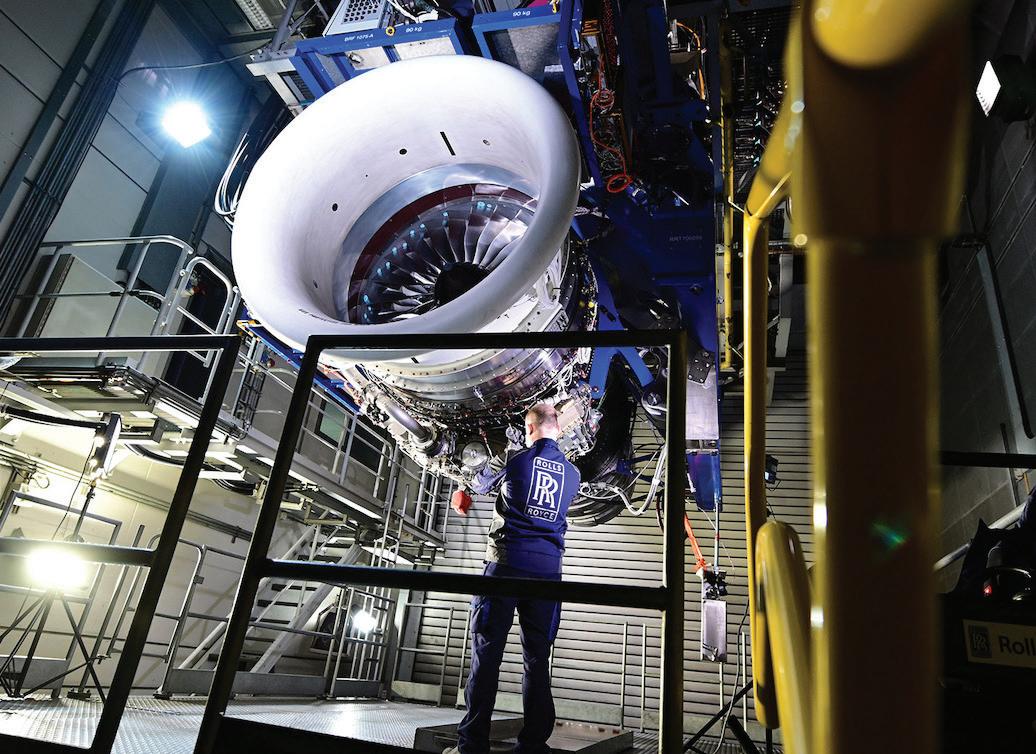
The Pearl 10X test engine ran for the first time earlier this year, and Rolls-Royce said it surpassed target thrust levels on that initial trial, “making it the most powerful business aviation engine” in its portfolio. Rolls-Royce further said all tests conducted so far have demonstrated the reliability targets and that it will meet performance requirements.
Testing has been conducted on the Pearl’s new ultra-low emissions additive-layer-manufactured combustor, which
is compatible with 100 percent sustainable aviation fuel, and the new accessory gearbox designed for higher additional power extraction. The first complete 10X powerplant—including a nacelle from Spirit AeroSystems, engine buildup, and mount system—will roll out later this year.
The Pearl 10X features the Advance2 engine core combined with a highperformance low-pressure system; high-pressure compressor with six-blisked stages; ultra-low emissions combustor; two-stage shroudless high-pressure turbine; and enhanced four-stage low-pressure turbine that Rolls-Royce said is among the most efficient and compact in the industry.
Central Flying Service (CFS) in Little Rock, Arkansas, has been acquired by venture capital firm Tricoastal Ventures in a 100 percent stock transaction. Based at Bill and Hillary Clinton National Airport, CFS o ers Part 145 MRO, aircraft management, and charter, as well as flight training. Tricoastal will also leverage its ownership of Texas-based aircraft dealers American Kodiak and Volare Air for CFS to provide authorized maintenance for Kodiak and Tecnam aircraft.
Textron Aviation has certified all 20 of its service centers under the National Air Transportation Association’s (NATA) Sustainability Standard for Aviation Businesses, making it the first aircraft OEM to do so. The standard promotes sustainability and encourages use of environmentally friendly energy sources. The NATA certification follows the airframer’s 20-year contract with Kansas energy company Evergy to provide its Wichita and Independence, Kansas factories with electricity derived from wind energy.
The Falcon 10X marks the third application for the Rolls-Royce Pearl family after the Gulfstream G700 and Bombardier Global 5500/6500.
z
CAE’s first full-flight simulator for the Dassault Falcon 6X will be online at its Burgess Hill training center in the UK in the fourth quarter. As the exclusive training provider for the 6X, CAE has developed an immersive pilot training program to support the aircraft type’s service entry in the first half of next year. In addition, a Falcon 8X full-flight simulator will also be ready for training at CAE Burgess Hill by year-end. This news comes on the heels of an announcement that CAE will soon break ground on a new business aviation training center near Gulfstream Aerospace’s headquarters in Savannah, Georgia. The facility is slated to open in mid-2023.


 BY GORDON GILBERT
BY GORDON GILBERT
In the first three months of the year, the Aircraft Electronics Association (AEA) said total worldwide business and general aviation avionics sales amounted to $634.5 million, as reported by participating companies. The amount represents an increase of 4.8 percent from the fourth quarter of last year and 11.6 percent growth over the first quarter of last year.
The AEA says these increases were driven by a 34.6 percent improvement in forward-fit sales (avionics installed by airframe manufacturers during original production) compared to the same time frame a year ago. “The more than $354 million in forward-fit sales was the largest sales total in that category since the third quarter of 2019 when more than $366 million in forward-fit sales were reported,” the association said.
The dollar amount reported from net sales prices (not manufacturer’s suggested retail prices) represents all business and
general aviation aircraft electronic sales, including all components and accessories in cockpit/cabin/software upgrades, certified and noncertified electronics; all related hardware; batteries; and chargeable product upgrades from participating manufacturers. The amount does not include sales figures from repairs and overhauls, extended warranty payments, or maintenance subscription services.
Of the more than $634 million in first-quarter 2022 sales, 44.2 percent came from the retrofit market, while forwardfit sales amounted to 55.8 percent of first-quarter sales. z

Daher expects the first flight of its hybrid-electric EcoPulse technology demonstrator to take place by year-end. Developed in partnership with Safran and Airbus and supported by France’s CORAC civil aviation research council, the test aircraft is based on the TBM 900-series airframe and features six wing-mounted 50-kW electric motors in addition to its standard PT6 turboprop engine. Its purpose is to develop the key architectural principles for future hybrid-electric airplanes. Daher is responsible for flight and airworthiness testing, Safran electric motors and integration of the distributed hybrid propulsion system, and Airbus the highenergy-density 350-kW main battery system.
The Irish Business & General Aviation Association used EBACE 2022 as the venue for its o cial launch. Having since grown to 25 members, the association is also an accepted member of the International Business Aviation Council. The group will hold its first conference this November in Limerick with topics such as U.S. CBP pre-clearance at Shannon, how setting up in Ireland can provide entry to the European market, and how private charter can support international corporations and bolster economies.
The latest news, data, and analysis on the future of civil aviation.
Blended winglet manufacturer Aviation Partners is “in the early stages of analyzing a potential airframe for winglets,” said company president Gary Dunn. Though any announcement about the program, if it proceeds, would be some months o , Dunn said the platform has a large in-service fleet. “Almost anything we’ve ever done started out as an aftermarket or retrofit plan,” said Dunn. “We’re also keeping our eyes open for other opportunities.”

More than 120 Textron Aviation turbine aircraft departed from 28 states on June 4 to transport athletes and their coaches to the 2022 Special Olympics USA Games in Orlando, Florida. Beechcraft, Cessna Citation, and Hawker aircraft participating in the Special Olympics Airlift landed and took off every three minutes for about eight hours that day at Orlando Executive Airport.
This marked the eighth time Textron Aviation has organized the airlift, which since 1987 has flown more than 10,000 athletes and coaches to and from the games. Under the program, Textron Aviation owners and operators donate the use of their aircraft, as well as pilots and fuel, to
transport athletes and their coaches. More than 800 passengers were flown to this year’s games, which concluded on June 12.

“This is an extraordinary experience for everyone involved and provides an impressive visual of the power of general aviation as well as the philanthropic side of the aviation industry,” said Textron Aviation president and CEO Ron Draper. “The ultimate mission of the Special Olympics Airlift is to make sure all the athletes who are invited to participate at the national level are able to get to the Games. Travel is the biggest expense for Special Olympics programs, and for many athletes this is their first time leaving their home state.” z
Blade Air Mobility has agreed to acquire the commercial passenger transport activities of European helicopter operators Monacair SAM, Héli Sécurité, and another as of yet unnamed helicopter operator in the south of France for $50 million. The transaction is expected to close in the third quarter. Under the agreement, Blade will become the exclusive customer of the carriers and purchase their commercial activities. The carriers will continue to own and operate their fleets only for Blade’s scheduled by-the-seat and charter service in the south of France, Monaco, Switzerland, and Italy.
Boeing named Erika Pearson as president of Boeing Business Jets, responsible for sales, support, and operations of the company’s commercial products in VIP, government, and military service. Pearson most recently served as sales director in Asia-Pacific, leading the Singapore Airlines Group, Air New Zealand, and Fiji Airways accounts for Boeing Commercial Airplanes. She succeeds JD Detwiler, recently named as business development leader for Boeing Defense, Space, and Security programs.
Global Jet Capital (GJC) continues to attract new investments, and new investors, as it recently closed on its sixth asset-backed security o ering and raised about $609 million. The BJETS 2022-1 o ering brought GJC’s total securitized assets to $4.4 billion and bonds to $3.6 billion. GJC completed its sixth round a little more than seven years since it was established. Since 2014, it has grown to become one of the largest players in the business aircraft leasing and financing market.



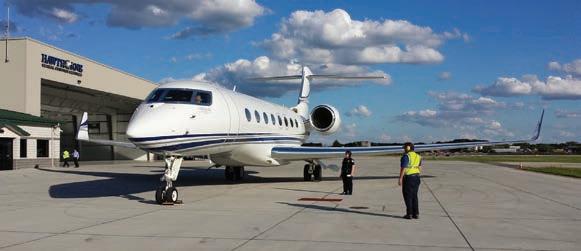





We can’t leave the future to chance. That’s why we’re committed to giving it a positive outlook with our latest generation of aircraft. Comprised of the A220, A320neo, A330neo and A350, this versatile collection provides best-in-class cost of ownership, combined with exceptional reliability. Designed to reduce fuel burn by 25%, these aircraft also have a lower noise footprint. So passengers can bene t from a quieter, more comfortable experience, while together, we help ensure the world remains a beautiful place.

The first quarter brought good news regarding deliveries for the general aviation industry, according to statistics released in late May by the General Aviation Manufacturers Association (GAMA). Airplane deliveries rose nearly 15 percent year-over-year in the quarter, but they were led by smaller aircraft. Overall, the industry witnessed a $300 million decline in billings from a year ago, to $3.7 billion.
Turboprops saw the biggest increase in deliveries—up more than 30 percent over the first three months of 2021, with higherend pressurized models notching a 39 percent boost.
Textron Aviation more than doubled the total of King Air twins it produced in the first quarter of 2021, handing over 15 this year. Pilatus saw an 86 percent increase in PC-12 deliveries year-over-year, and while Piper Aircraft handed over six M600 SLS turboprop singles during last year’s first quarter, this year it delivered a mix of seven M600s and M500s. Epic increased deliveries of the E1000 by two airframes over its previous total of one.
Daher was the lone turboprop manufacturer to show a deficit, having delivered two TBM 940s in the first quarter of this year, compared with seven in the same period in 2021. But that can be explained by its new TBM 960 model, which began shipping last month.
On the business jet side, deliveries increased by a modest 4.4 percent, from 113 in the first quarter of 2021 to 118 during the first three months of this year. Textron’s Cessna saw the largest gain, doubling the deliveries of the Citation CJ3+ from four to eight, on its way to logging an overall 39 percent increase year-over-year. Bombardier, which handed over the final three Learjets in the first quarter, was five aircraft shy of its total of 26 from last year. Gulfstream was three off its total of 28 in
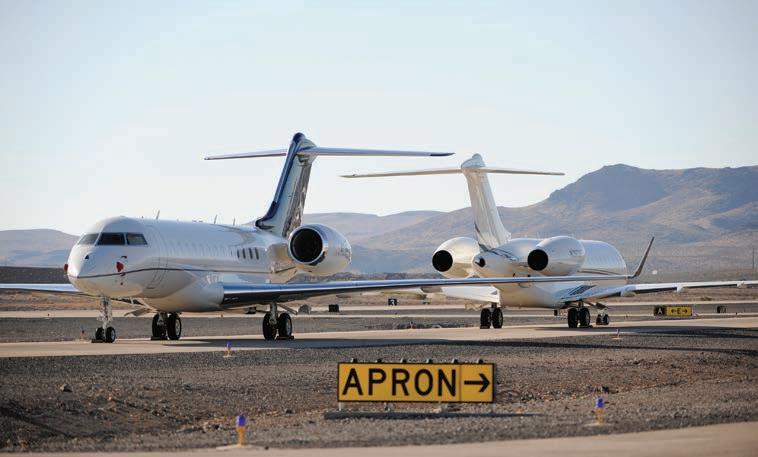
Business jet deliveries climbed overall in the first quarter of 2022 versus 2021, up 4.4 percent to a total of 118 airplanes.
first-quarter 2021, with the discrepancy coming from the large-cabin segment of its product lineup. Embraer, which handed over 13 aircraft in the first three months of 2021, delivered eight in the same quarter this year. Honda Aircraft was one unit off its total of five from last year.
Pilatus and Cirrus were the only other private jet manufacturers to increase their output this year, with the former more than doubling the number of PC-24s it delivered from three to seven in the first quarter, and Cirrus adding four SF50 Vision Jets, to seven. Dassault Aviation reports its deliveries only in the middle and end of the year.
For the quarter, Airbus had three deliveries, including the first green ACJ TwoTwenty, while Boeing did not deliver any BBJs.
Piston airplane deliveries climbed nearly 14 percent year-over-year in the first quarter, while helicopter handovers increased 7 percent in the same period.
Turbine-powered rotorcraft exceeded the first-quarter 2021 delivery total by 7
percent, but the segment still saw a 17 percent decrease in billings.
Bell notched the largest improvement, exceeding its first-quarter 2021 delivery total of 20 by five aircraft and tacking on 13 more light 505s than it produced a year ago. Leonardo Helicopters improved by four units on its year-over-year numbers, having delivered six AW119Kx models in the first three months of 2022 versus none in the same period last year. Airbus Helicopters remained static at 36 deliveries, while Robinson Helicopter R66 output was one o ff the total of 22 in the first quarter of 2021. Sikorsky Aircraft had no deliveries for the quarter compared with one S-92 a year ago.
“It is reassuring to see aircraft deliveries continue to show strong progress as we emerge from impacts of the pandemic,” said GAMA president and CEO Pete Bunce. “It is especially encouraging to see piston airplane deliveries continue their positive trajectory and exceed last year’s numbers, as well as the first-quarter numbers of 2020 and 2019.”
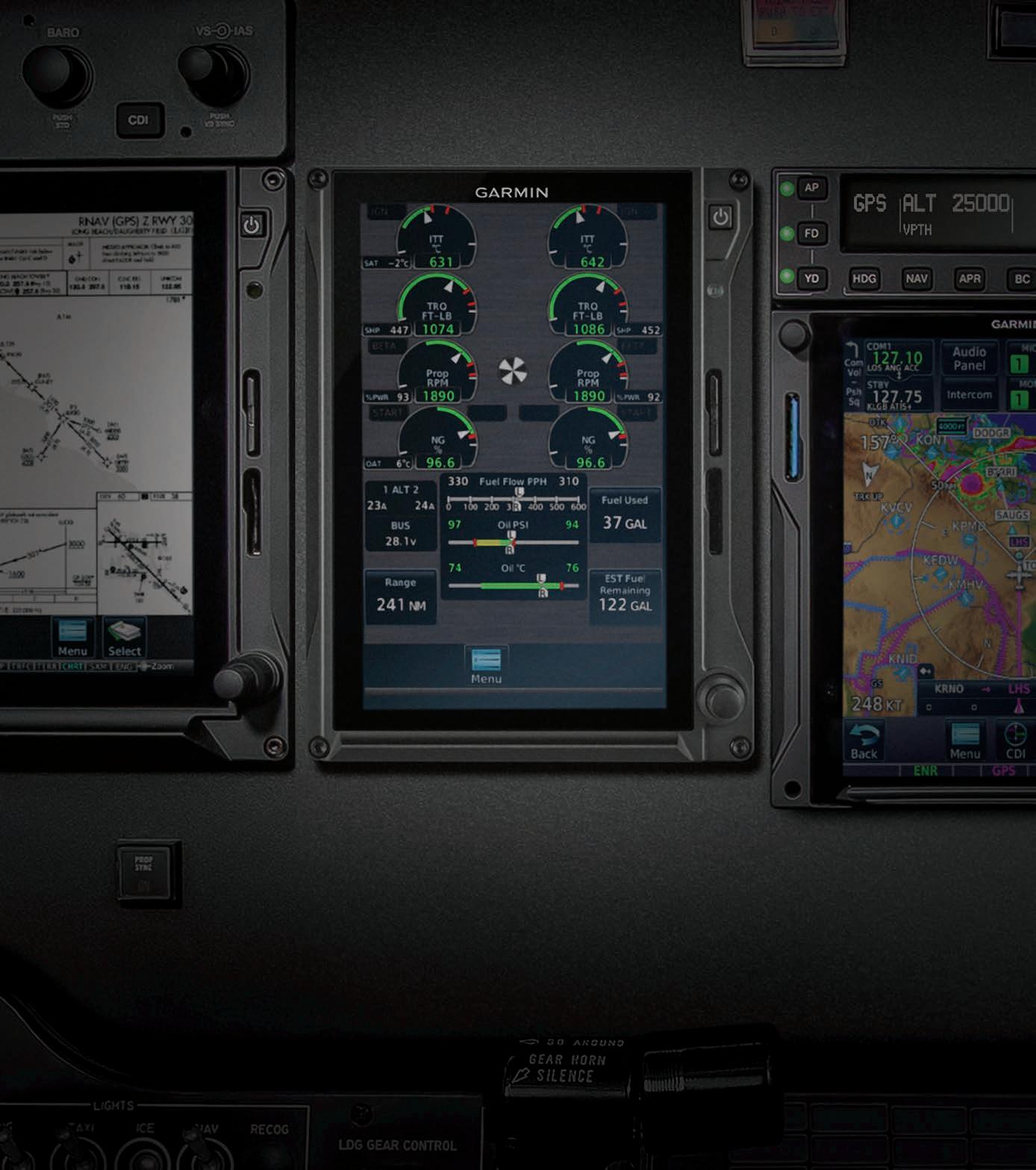



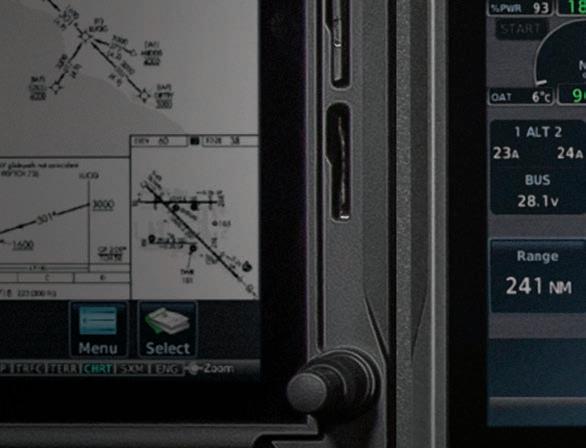





AIN is celebrating its golden anniversary by highlighting select news from the archives over the past half-century.
Piper Aircraft. “In the final analysis, Piper’s losses for the past two years and the low level of general aviation sales really made the decision for us. We just could not continue to operate with so much unused capacity in our plants.”
The initial issue of the specification will permit the use of fuels derived from the Fischer-Tropsch (FT) process, blended with up to 50 percent jet-A. The approval of the FT process fuels could be followed by qualification of other formulas.
(ACN July 1, 1984 p.88)
Then: Piper has begun a mammoth packing job at its two Pennsylvania plants following the announcement by company president Max Bleck that all aircraft production activities will be transferred to its facilities in Vero Beach and Lakeland, Florida, beginning in August and to be completed by year’s end.
The consolidation affects a total Piper workforce of 850 in Pennsylvania. In Lock Haven, the company’s legendary headquarters where the aircraft manufacturer currently builds its Mojave, T-1040 Commuter, and Cheyenne IA and IIXL models, 650 workers will feel the impact of the move. Another 200 employees at its Quehanna metals fabrication plant will also be affected.

“This has been a very difficult decision; one made with deep regret,” said Robert Campion, chairman and president of Lear Siegler, the company that recently acquired
Now: One of the “Big Three” from aviation’s golden age along with Beech and Cessna, Piper Aircraft, which celebrates its 85th anniversary this year, had called Lock Haven, Pennsylvania home for nearly a half-century before it ended its operations there and moved everything to the Sunshine State, where it had had a presence since 1957. After its migration, the airframer has continued its line of light aircraft, anchored by its flagship M600 single engine turboprop. In 2020 the company received FAA type-certification for its HALO safety system, making the M600/ SLS the world’s first Garmin Autolandequipped aircraft to be certified.
Then: The prospect of synthetic fuel qualification took an important step closer to reality last month when ASTM International’s aviation fuel subcommittee passed a new specification for alternative jet fuel. The new specification details the properties and criteria required to control the production and quality of synthetic fuels for aviation use.

(AIN August 2009 p.45)
Now: Sustainable aviation fuel, or SAF as it is now known, represents the major portion of the aviation industry’s decarbonization aspirations. With seven approved production pathways, plus more than a dozen waiting in the wings for certification, global production is expected to exceed 600 million gallons of pure SAF this year, a total that is expected to more than double by 2025 as more major refineries come online. Last year, the White House issued the SAF Grand Challenge, tasking U.S. industry to reach 3 billion gallons of SAF by 2030, a milestone on a government-wide commitment to scale up the production of SAF to 35 billion gallons per year by 2050. The ever-expanding list of potential
Aviation has been a hotbed of innovation since the Wright Brothers built their own engine and Glenn Curtiss developed ailerons. More than a century after the industry’s dawn, innovation is still going strong with new avionics, fuels, materials, propulsion concepts, and engine technologies. And at the core of it all are the pilots that fly the aircraft and the maintenance technicians that keep them in the air. This means that their training must be as innovative as the industry itself. FlightSafety knows that the key to success in aviation is being beyond proficient—it’s being ready for anything the aircraft or its
surroundings can throw at you. And no set of slides is going to fully prepare you for the challenges of the real world. That’s why FlightSafety continues to bring innovation to its pilot courses through data-driven insights backed up by challenging simulator training, and to its maintenance technician courses through virtual engine trainers. Learn more about these cutting-edge programs through the articles in this insert and meet a FlightSafety customer—former NASA astronaut and current Cessna Citation pilot Charlie Precourt— who epitomizes the value of being prepared.
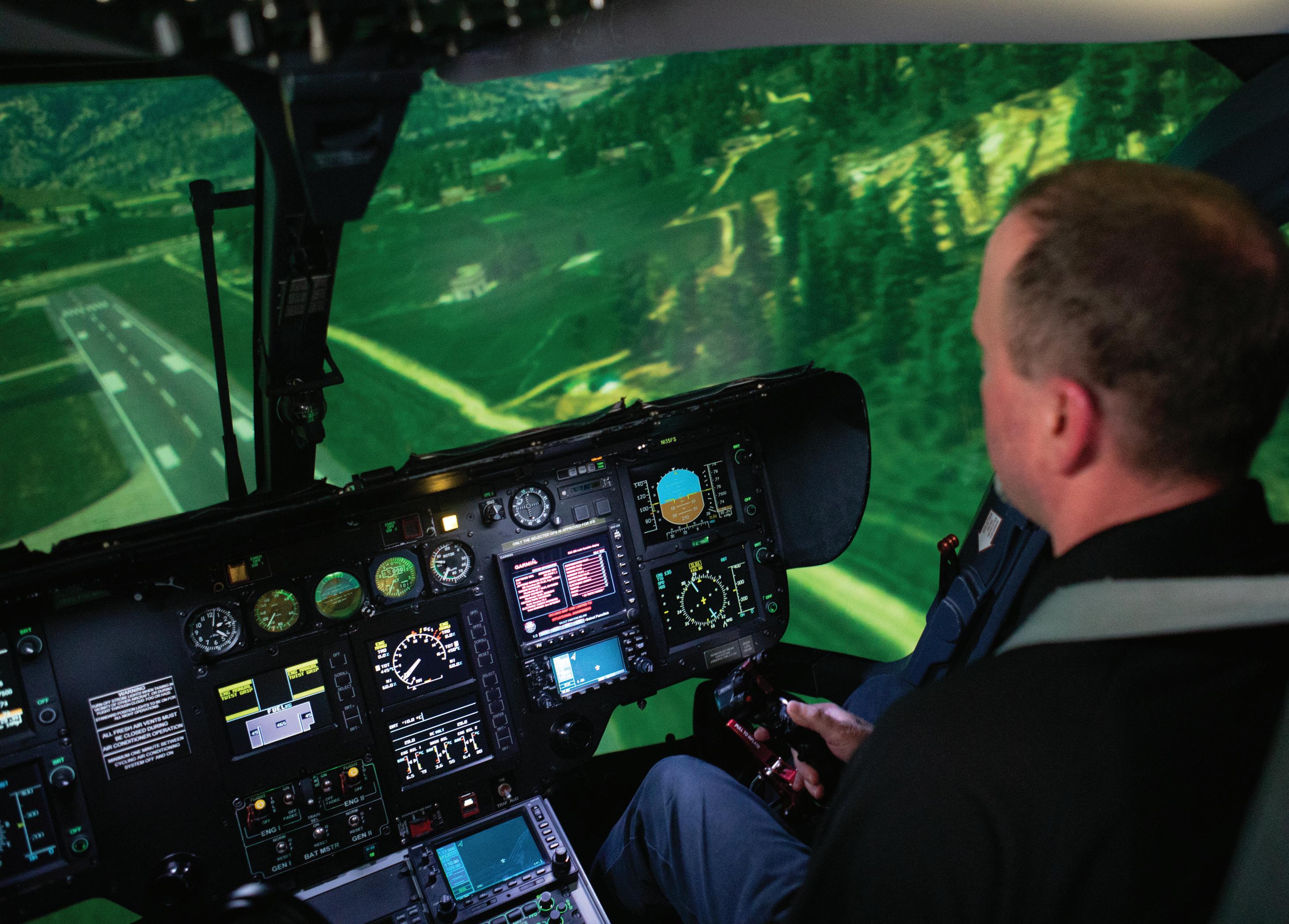
According to global commercial aircraft accident statistics published by Airbus for 2002-2021, runway excursions ranked third among the most frequent fatal accident types (behind loss of control inflight and controlled flight into terrain) and accounted for 35 percent of hull losses. Working with their partners at GE Digital to sift through flight operational quality assurance (FOQA) data and finding runway excursions or near misses to be a significant issue for business aircraft as well, FlightSafety Executive Vice President of Safety and Regulatory Compliance Richard Meikle and his team rolled out a new runway excursion prevention program for all fixed-wing clients starting in February 2022.
“When we began working with GE Digital, we didn't know for certain runway excursions was where we wanted to focus,” said Meikle. “But not only was the data specifically highlighting runway excursions as the clear top safety threat, it told us exactly where the threat was highest. In some cases, such as Jackson Hole, WY, one in four landings triggered an alert in the data indicating it was at increased risk of an overrun.”
Launched in October 2021, the partnership between GE Digital and FlightSafety allows both entities to benefit from the other’s strength.
“GE Digital is honored to partner with FlightSafety to bring data-based training to corporate aviation,” said Andrew Coleman, General Manager of GE Digital’s Aviation Software business, in the 2021 press release. “By applying our flight data expertise and airspace efficiency software to FlightSafety training, we’re helping aviation professionals to identify the safest way in and out of any situation.”
The joint team meets weekly to discuss insights gathered from analysis of GE’s Corporate-FOQA database containing actual flight data—scrubbed of any aircraft, pilot, or operational identification—from more than 300 flight departments and over 1,200 aircraft. Data points include more than 2,000 measurements from engine, avionics, and airframe sensors; automatic processing of flight data populates a library of more than 200 events ranging from aircraft limitation exceedances to advanced risk-based modeling. FlightSafety’s goal is to use the C-FOQA data to determine the real-world scenarios that training can mitigate.
“Actual flight data will allow us to tailor training to address safety threats before crews even experience them,” said Brad Thress, FlightSafety President and CEO. “FlightSafety employs a risk-based approach to training, and partnering with GE Digital for its C-FOQA data will have incredible applications for us on

approach stability, touchdown point control, procedure compliance, and runway safety, among other factors.”
The joint GE Digital/FlightSafety team collaborate to focus on the events identified in the data. The GE Digital team pores over the data reports each week, classifying event severity from 1 to 3, with 3 being the most serious. GE provides the data analysis while FlightSafety leans on its more than 70 years of experience training business aircraft operators to identify the safety-related trends.
“No other training provider has the level of access to this volume of data,” said Meikle. “It gives us an insight into the entire industry that is using C-FOQA. Obviously, the C-FOQA data itself is incredibly powerful, but we have the ability to effect significant change using that data. We provide GE Digital with the ability to influence change, and they provide us with the focus to change the right things at the right time.”
After identifying runway excursions as its first focus, the team drilled further into the data to find the root causes, looking at the correlation between threshold crossing height/speed and touchdown point. For example, the team found pilots attempting to make smooth landings by floating down the runway eroded safety
margins with little benefit. The team also determined the top 10 airports for runway-excursion risk based on the data, including seasonal fluctuations.
Armed with recommendations, data, and research, FlightSafety and GE Digital created a 15-minute debrief that has been shared with all FlightSafety fixed-wing pilots taking initial or recurrent courses starting in February 2022.
“It’s an anchor for every course and a consistent message that triggers the discussion,” said Meikle. “There have been at least 35 runway excursion events just this year to date [through March 2022] in multi-engine turbine airplanes around the world. If we can reduce the runway excursion risk through focused training and educate crew members on the techniques to prevent the runway excursion, then we can have a dramatic impact on safety. It saves lives, it saves airplanes, and it reduces the loss payouts by insurance carriers. It's better for the industry all around.”
Meikle said the focus area will change every seven months to capture the entire semi-annual training population, with pilots who have already heard the discussion able to skip it or choose a new topic. An example future focus topic may be preventing altitude restriction excursions at airports such as Van Nuys, CA and Teterboro, NJ requiring low-altitude level offs due to traffic passing overhead inbound to other airports.
“At some of these airports, ATC wants you to climb and then level off very quickly—maybe as low as 1,500 feet AGL—to avoid traffic coming over the top,” Meikle said. “The data will tell us how pilots are setting up their avionics and what we need to teach them to reduce confusion in the cockpit so they execute the departure with precision.”
Extending its goal to reduce runway excursions in the real world, FlightSafety is also working with GE Digital to build RNAV visual flight procedures (RVFP) for specific airports or runways that don’t have instrument procedures. The RVFPs can be loaded into the aircraft’s flight management system to provide a lateral and vertical path to the runway using a set of waypoints and altitudes.
“If you deliver the airplane to the runway in a stable fashion, your risk of a runway excursion is reduced dramatically,” said Meikle. “We are already engaged with GE Digital experts in the construction of three RVFPs with the goal of building at least two per year.”
Meikle said FlightSafety is targeting airports that show high runway excursion or unstable approach risks, such as Sedona, Arizona, where pilots can lose sight of the runway due to terrain near runway 21, and others where airspace constraints influence arrival paths such as New Jersey’s Teterboro,
where the crew of a Learjet 35A stalled the aircraft during an unstable circle to land approach to a runway without an ILS in 2017.
“They were not on any defined procedure and got very close to the runway before they started the circling maneuver,” Meikle said. “An RVFP could prevent this kind of tragedy, allowing you to line up on centerline at the right altitude, on the right approach angle, nice and stable, essentially normalizing what is otherwise a challenging maneuver.”
FlightSafety’s partnership with GE Digital provides focus in targeting specific safety threats identified in the industry through real-world data, and then development and deployment of targeted procedures to reduce that risk.
“We have a long-term relationship with GE Digital,” Meikle said. “And our plan is to continuously evolve training, because training should be more than a regulatory event. It's not a regulatory event in our minds. It's a safety event. It happens to satisfy the regulatory requirements in the process. It gets you prepared instead of just being proficient.”
Partnering with GE Digital using C-FOQA data to drive training innovation is the next step in FlightSafety’s continuous drive to produce the most prepared pilots in the industry.

No other training provider has the level of access to this volume of data. It gives us an insight into the entire industry that is using C-FOQA.
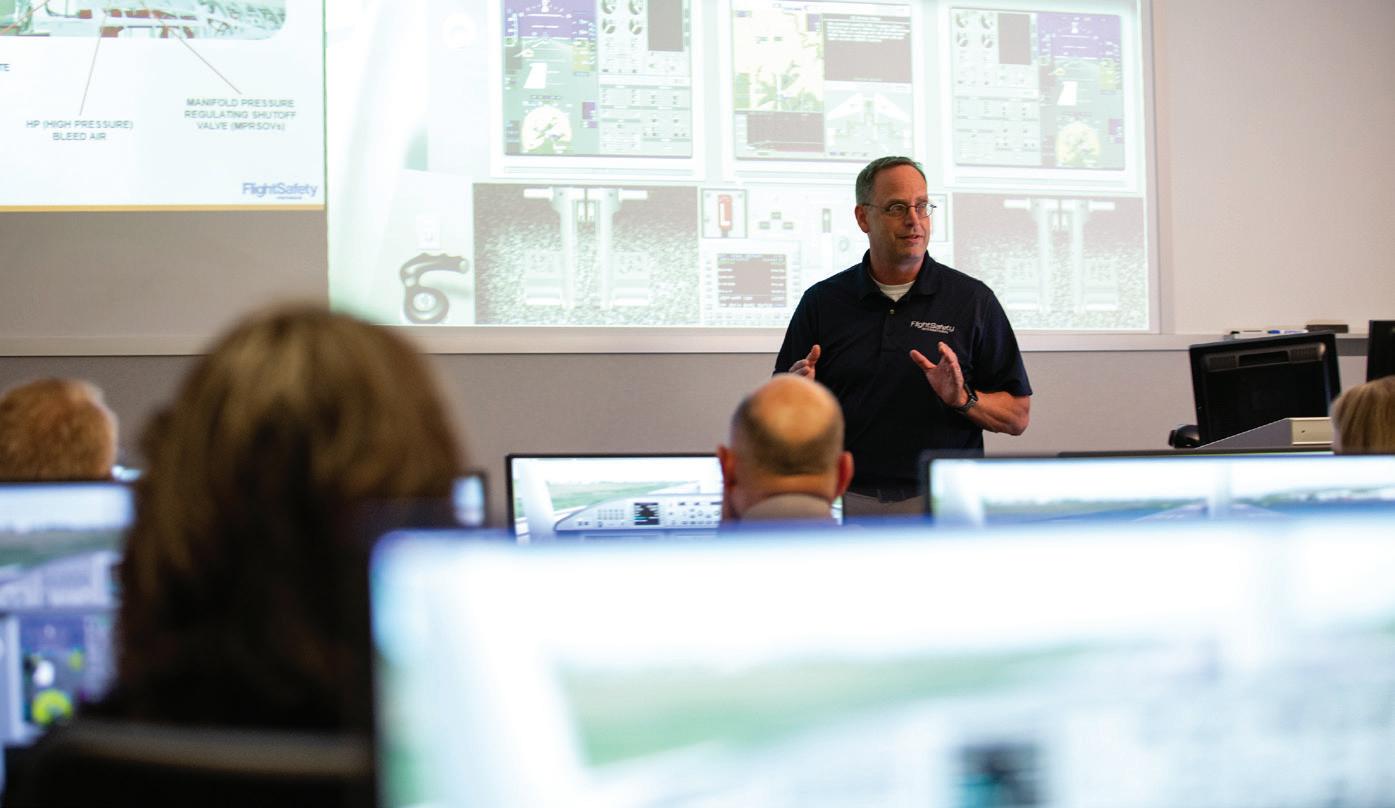
What would the most comprehensive engine maintenance training look like to you? Perhaps being able to disassemble and reassemble the engine and components? Learning how to visually inspect all interior areas for corrosion and damage, including turbine blades and hot sections? Comparing components for various model numbers to see differences and determine installation steps? Practicing the most critical procedures?
FlightSafety’s series of Virtual Engine Trainers allows you to do all this and more in a safe, time-effective environment.
“Our Virtual Engine Trainer is a wonderful product for teaching everything from the beginning stages of theory and familiarization all the way through complex maintenance procedures,” said DeWayne Dixon, Regional Director of Training Operations for FlightSafety International. “Our instructors are using it for high-level overviews on how a particular engine model operates, specific maintenance procedures such as removing a fuel-control unit, and even engine and component troubleshooting scenarios. It’s becoming an indispensable tool.”
FlightSafety offers Virtual Engine Trainers for various Pratt & Whitney Canada engines, including several
models of the PT6 turboprop, PW200 turboshaft (helicopter), and PW300 turbofan. Each Virtual Engine Trainer consists of 3-D models of the specific engine and its components in a server-based software platform that instructors can access in the FlightSafety classroom.
“The COVID shutdowns heightened our attention to how this 3-D modeling could be leveraged in the classroom,” said Dixon. “Throughout COVID—and it’s still an option even now—we were running LiveLearning courses where clients logged in remotely. Our instructors were trying to teach them how the engine works without the physical asset. Using the virtual engine trainers allowed clients to see and interact with the engine without being in a FlightSafety Learning Center.”
When a Virtual Engine Trainer is first opened, the entire engine is available for view, essentially floating in a modeled mechanics’ bay as if sitting on an invisible cradle. Using the mouse to rotate the view, the user can look at all sides of the engine, even the underside, which would normally be hidden by the cradle.
Next, the user can begin virtually disassembling the engine using the menu or zoom functions.
Each Virtual Engine Trainer starts out as a set of 3-D models obtained from the engine manufacturer. Advanced virtual technology of the type found in gaming engines allows the models to
be combined into a completed engine, which can then be disassembled and reassembled according to inputs from the user. The gaming engine also allows the model to be manipulated on multiple axes, which makes it possible for the engine or component to be viewed in any position for detailed inspection.
“It’s a perfect tool for teaching inspections because we can introduce damage to the internals of the engine without damaging a physical engine or hoping that the right damage exists on the physical asset,” said Dixon. “So, if we're doing a borescope inspection, we can use that to find that corrosion and provide a true picture of what it would look like and where it would be found.”
The weight, bulkiness, and complexity of a real engine often inhibits how much a student can see and do in a particular timeframe. The Virtual Engine Trainer allows instructors to show internal views of the engine without the timeconsuming process of physically removing each component. This allows for scenario-based troubleshooting, such as where compressor blade erosion would be found if an engine was operating in a sandstorm, or what areas the technician should inspect if water was sitting in the base causing corrosion.
“We can show a crack or corrosion as what it actually looks like and measure how long the crack is,” said Dixon. “The
technician can take that information, go to the manual, and determine whether it’s acceptable; or perhaps if this component is cracked, determine whether there is other internal damage to the engine. If we're doing this on a physical asset at the center, I can't guarantee that I have that damage inside of that engine, but with the virtual trainer we can create these realistic scenarios.”
FlightSafety has been working with P&WC for more than 10 years to develop, improve, and implement cutting-edge training technology to aviation maintenance professionals around the world. The first Virtual Engine Trainer—a PT6 variant—became operational in 2015, and a borescope trainer for that engine was launched in 2017. Obtaining the computer-aided drafting (CAD) files directly from the OEM to build each Virtual Engine Trainer requires a high level of trust, and safeguarding of P&WC’s intellectual property which is something that FlightSafety takes seriously.
“After our team receives the CAD files from Pratt and Whitney, we modify them—changing hundreds of measurements just slightly, although no one would know it—before they’re put in the virtual engine,” said Dixon. “We protect the OEM’s IP to maintain that level of trust. Without the trust between us and the OEM, the virtual trainer doesn’t get completed. We’re working toward that level of trust with other engine OEMs as well.”

Ten Virtual Engine Trainers representing six models of PT6 turboprops and four models of turboshaft/turbofan engines have been installed at 13 FSI locations worldwide, although not all locations have access to all Virtual Engine Trainers. Each Virtual Engine Trainer provides specifics for a particular engine model based on the needs of the training course at that facility, and some provide specific training, such as borescope inspection. Each Virtual Engine Trainer also requires its own set of tasks or
procedures to be built, such as removing a fuel or propeller control unit.
“We've had great responses from the technicians who have used the virtual trainers both in the centers and through LiveLearning,” Dixon said. “It's very intuitive and easy for the clients to use after a bit of an introduction. It’s also made the instruction more engaging than the typical PowerPoint presentation. It’s like having the asset in your living room.”
Student engagement is especially important during FlightSafety’s LiveLearning courses, in which clients attend instructor-led training remotely through online portals. Just as a course at a FlightSafety Learning Center may include students from all over a country or region, a LiveLearning course may be attended by students from various countries at the same time. In the classroom, the instructor can allow students to control the virtual trainer allowing them to practice procedures or virtually perform an inspection. When incorporated into a LiveLearning session, a Virtual Engine Trainer is generally controlled by the instructor, but control can be passed to students attending remotely to give them the same kind of experience as in the classroom.
“The Virtual Engine Trainer provides options for both FlightSafety and our clients,” Dixon said. “Some clients want to be back in the Learning Centers because they get a chance to dis connect from the hangar so they can concentrate on training. Other compa nies will want to continue remote training because of budgetary cuts, travel restrictions, or just not wanting their techni cians to be away from the facility for so long.”
FlightSafety is con tinuously looking for ways to incorporate the technology into the classroom, such as allowing
less-structured exploratory time for students attending a class at a Learning Center. They are also considering the possibility of adding virtual reality (VR) components for specific procedures.
“We’re working with universities studying the retainability of learning procedures with the virtual trainer versus using virtual-reality goggles,” said Dixon. “Certain procedures might be better suited to using VR goggles and gloves so you can get the physical feedback, such as when a component is too heavy to be moved or picked up with one hand.”
FlightSafety has been a leader in flighttraining simulation for more than 70 years, so it should come as no surprise that it should carry this distinction over to maintenance training as well. In its readers’ survey, Aviation International News named FlightSafety’s Virtual Engine Trainer as a 2021 Top Flight Award winner in Maintenance Innovation.
“As this program evolves and we add more functionality, we continuously look for ways to make the best use of this technology in the classroom,” said Dixon. “We’re already reaching out to other engine OEMs and will continue to expand our virtual maintenance training offerings as the technology and trust allow.”
here I was, 10 minutes after takeoff from Omaha in the [Cessna Citation] CJ1+ and the avionics strapping unit fails,” said Charles J. Precourt, a retired NASA astronaut with more than 12,000 hours of flight time in over 90 models of military and civilian aircraft. Now a consultant, but recently retired as vice president of propulsion systems at Northrop Grumman Space Systems in Ogden, Utah, Precourt was on the second leg of his homebound journey from Washington, D.C., to Ogden when the emergency occurred.
“All of a sudden, I had a lot of missing information on my displays and the autopilot disconnected,” Precourt said. “We train for a variety of avionics malfunctions, but this particular failure affects many avionic systems at once. I transferred the autopilot to the copilot side and got some of my information back, but it didn’t give me the autopilot. So, I had to hand-fly the arrival to Denver Centennial [airport]. That was my best option since I couldn’t fly it into RVSM airspace with the autopilot out.”
A FlightSafety customer since 2016 and brand ambassador since 2020, Precourt credits his extensive simulator training for preparing him to handle this unusual avionics failure. “Parts of what I had done in the simulator were applicable,” Precourt said, “although there was some uniqueness to this failure that caused me to build upon the training. Certainly, if I hadn’t practiced air data computer or attitude heading reference system failures
at FlightSafety, I would have been further from figuring out the right thing to do.”
A 1977 graduate of the U.S. Air Force Academy, Precourt spent time as an instructor in T-37 and T-38 jets and as a pilot in the F-15 Eagle before graduating from the USAF Test Pilot School at Edwards Air Force Base in California in 1985. Remaining at Edwards after graduation, Precourt flew the F-15E, F-4 Phantom II, A-7 Corsair II, and A-37 Dragonfly.
NASA selected him as an astronaut candidate in 1990, at a time when the Space Shuttle program had already been in operation for nearly a decade and yet its spacecraft had flown only 32 times.
“From the beginning of the human space flight program, NASA relied heavily on the experience of military test pilots because of the experimental nature of spacecraft,” said Precourt. “They leaned on the approach taken from flight tests and corresponding preparations, including the ability to use simulators not only to prepare, but to create the simulators from flight test data.”
Precourt now attends simulator training at FlightSafety a couple of times per year to keep his skills in the Citation sharp, but back then nearly the entire Shuttle training was spent in various simulators and procedure trainers. Each phase of Shuttle flight had its own simulator—launch, orbital phase, operations
during orbit, reentry, and landing.
“We had a motion-based simulator much like FlightSafety has for [14 CFR] 61.58 [pilot proficiency check] training in the jets,” said Precourt. “We would use that to train engine failures after liftoff, electrical failures, and all the kinds of things that jet pilots do in their 61.58…What you learn quickly is that to best prepare for the inevitable variations from the plan during space flight, you have to use a simulator.”

Precourt served as mission specialist on the Columbia mission STS-55 in 1993, using another simulator to learn how to operate the a variety of on-orbit systems. Between that and his next mission, piloting Atlantis on STS-71, he spent more time in simulators, including an airborne simulator crafted out of a highly modified Gulfstream GII, and another simulator that focused on rendezvous and docking with the Russian Mir space station.
“We would not allow a pilot to command a Space Shuttle until they had done a thousand approaches in the Gulfstream,” Precourt said. “The left seat was modeled just like the Space Shuttle. We would fly up to 35,000 feet and then put it into the approach phase of the Shuttle flight. The pilot in the left seat could fly exactly like he would on the last phase of approach and landing in the Space Shuttle. We would typically fly 10 approaches per training sortie, so that’s 100 flights in the GII. The simulation was so accurate that when I did my landing in the Space Shuttle,
Former NASA Astronaut Charlie Precourt Describes Value in Simulator Training from the Shuttle to Civilian Flightit felt like I was back in the Gulfstream.”
In addition to building muscle memory doing so many landings, the pilots received instant feedback after each landing—similar to the feedback provided after a simulation session at FlightSafety. Computers onboard the GII captured various flight parameters, which the pilot could study during the ascent between landings.
“Once we got to a touchdown point, the safety pilot in the right seat would take over the Gulfstream, add power, and climb us back up for another approach,” Precourt said. “During the climb out, the flight engineer would hand you a graphical trace of your hand controller inputs and the resulting trajectory shape along with a table of parameters. You could look at that and relate it in real time, make adjustments, and see if the aircraft did what you expected after the adjustment. I became a big fan of gathering and using flight data like this, and when I was chief astronaut, I would review the plots of my other commanders to see what we could do to improve.”
Precourt flew four Shuttle missions—three as pilot or commander—on three different orbiters. During those missions, he and his crew experienced software malfunctions, computer failures, and even a loss of communication requiring Precourt to reconfigure the radios during orbit to regain contact with the ground team. The most extensive failure caused an aborted launch on Precourt’s first mission where 3.5 seconds into the main engine start, computers detected a leak and shut down the three engines while still on the launchpad.
“You’re thinking about launch, the engines light off with all the sound and steam, and within seconds of liftoff, all of a sudden the engines are being shut down again,” Precourt recounted. “There are a huge number of procedures to run through, and of course we had done that in the simulator. So, we weren’t completely at a loss as to how to react in this unexpected situation, even with our brains still focused on launch.”
Whether in the Shuttle or in a business jet, Precourt stresses the value of being prepared through simulation.
“In the Citation I’ve had generator failures, a P2T2 probe failure, hydraulic issues, and other things that I’d seen in the simulator,” he said. “Failures become much less of a big deal after you’ve practiced them in the simulator. You know what the first step is, what the pacing is, and what the likely outcome’s going to be because you’ve prethought these decisions. It’s truly invaluable to have had that first experience in the safety of a simulator on the ground.”
You might think that Precourt—having retired from NASA in 2004 and transitioned to civilian life—would shun spending more time in simulators. Instead, the opposite is true as he continues to sharpen his skills in FlightSafety’s Citation simulators.
(CJP), worked with the Presage Group and FlightSafety on a study of more than 200 CJP pilots regarding their decision-making process during stable and unstable approaches. The study led to CJP creating their Safe to Land initiative and new SOPs will be integrated into FlightSafety’s Citation simulator training over the next six to 18 months.
“We looked at accidents from unstabilized approaches and asked ourselves why that happened,” said Precourt. “Using the simulator during beta testing, we put the guys through a variety of anomalous approaches and studied how they would react. We were able to get instantaneous feedback on the stability of each approach, height over the threshold, touchdown point and touchdown speed. And we were able to better define what a stabilized approach is, as well as the criteria demanding a go-around.”
Charlie Precourt Former NASA Astronaut
“Every time I go to FlightSafety, I learn something new,” Precourt said. “It allows you to create a mental model that means you’re not just going into an approach like the last one that turned out nicely. You’re always thinking about what do I do if such and such occurs, so when the time comes that the ‘if’ happens, you’re not so surprised and the goaround can be fine instead of an ‘oh, crap!’.”
Precourt says being prepared to go into the simulator is as important as being prepared to fly the real thing. “It’s priming the pump,” he said. “I like doing the online ground school at FlightSafety because it gives me a couple of weeks to dive back into the details on various systems and procedures like single-engine go-arounds, single -engine approaches in the weather, engine failures at the outer marker, and so on.”
In addition to being personally prepared, Precourt, in his role as Safety Committee Chairman for Citation Jet Pilots Association
Whether flying military, civilian, or space craft, simulators provide pilots with a means to prepare for those unexpected challenges of component, equipment, system, and engine failures in various weather, airspace, and runway configurations. But simulator training can also help prepare pilots for new adventures.
“I just came back from visiting various places in South America in the Citation, and the one that was most challenging was our visit to Machu Picchu,” said Precourt. “We flew in and out of Cuzco with an 11,000-foot airport elevation, minimum descent altitude of 14,500, broken clouds down to 15,000 feet, and mountains all the way down final on both sides. It’s a very complex place to fly in and out of, but on my last sim session we went through a variety of approach and takeoff scenarios. So, when we broke out of the clouds at that altitude with the sun breaking through on the city of Cuzco, the sky was unbelievably clear and bright colors were amazing. It was a really pretty approach, and a lot of fun to fly in there. That’s the value of being prepared.”
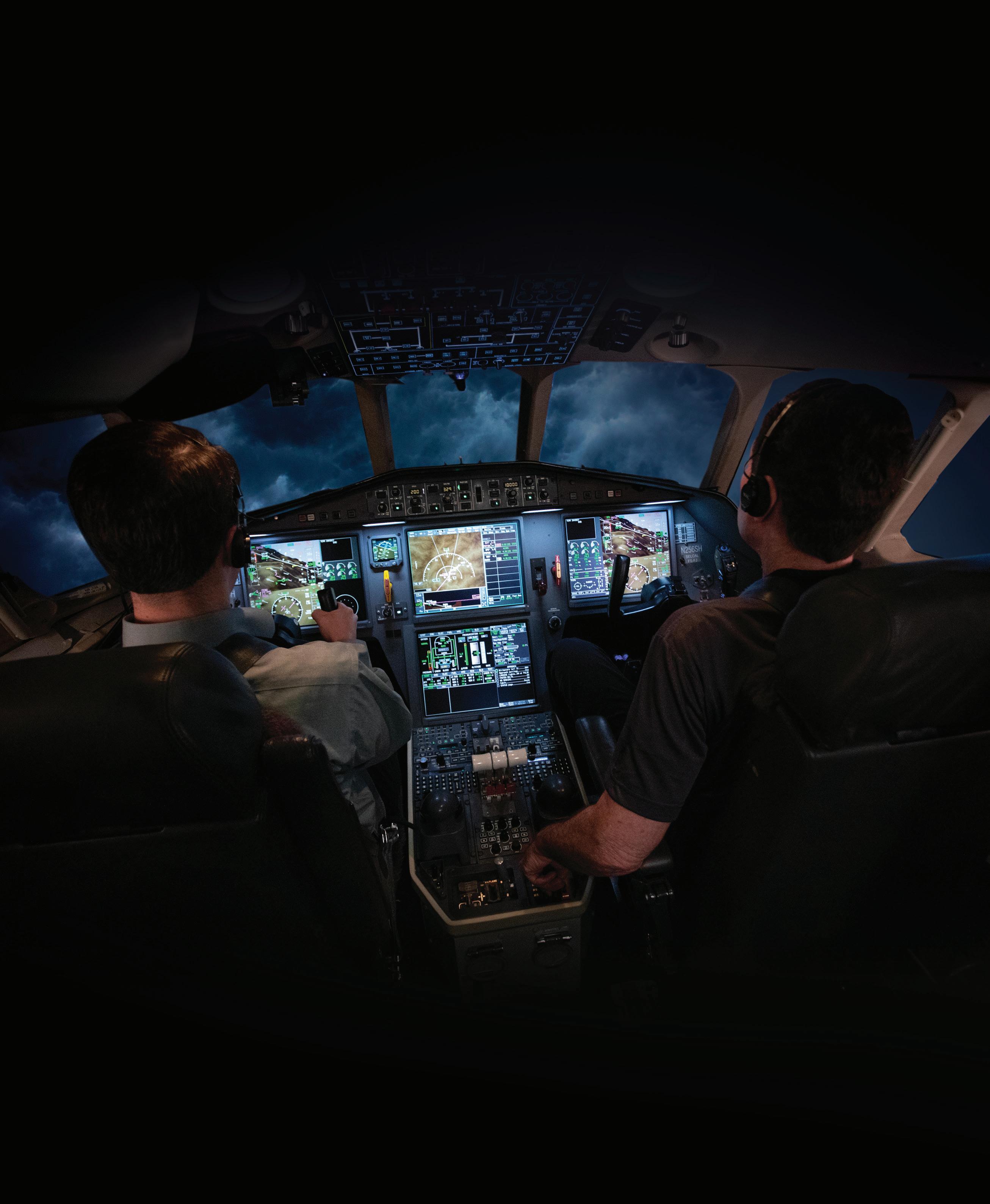
feedstocks includes used cooking oils and greases, tallow, oilseed crops, forestry wastes and residues, municipal solid wastes, non-recyclable plastics, and even carbon and hydrogen derived from the air itself.
Then: James Holahan, the founding editor of this magazine, died at the age of 94 on July 4 at home in Saddle River, N.J. with his family by his side.
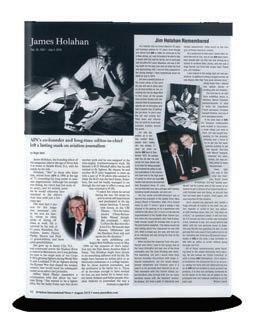
Holahan, “Jim” to those who knew him, retired from AIN in 1998 at the age of 77, conceding his long career to macular degeneration. Jim grew up in Jersey City, N.J. and commuted across the Hudson River to school in Manhattan, but it was perhaps his time in single seats of Air Corps P-38 Lightning fighters during WWII
and Lockeed F-80 fighters during the Korean War that shaped the scrappy tenacity that would mark his subsequent career as an editor and journalist.
Now: In 1972, at the age of 51, and after establishing himself as an aviation journalist of some renown, Holahan joined with AIN co-founder and CEO Wilson Leach to launch NBAA Convention News , a publication focusing solely on the business aviation industry, which later morphed into Aviation Convention News , and eventually the present Aviation International News. With a reputation as a tenacious and tireless worker, Leach noted that it was only Holahan’s failing eyesight that hindered his ability to edit the publications to his own unflinching standards that led him to finally retire while in his


(AIN August 2015 p.30)
late 70s, after 27 years at the helm of the magazine, rather than any lack of drive. He left behind a legacy of journalistic dedication, excellence, and integrity that his three successor editors-in-chief have strived to emulate as AIN reaches its half-century milestone. z
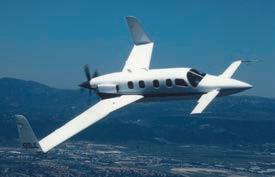
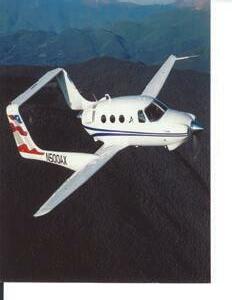
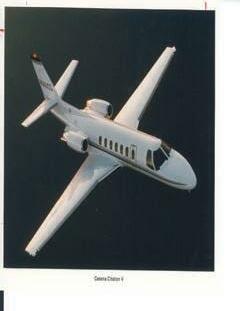

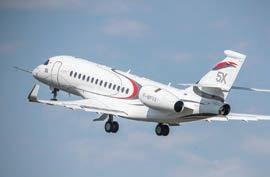
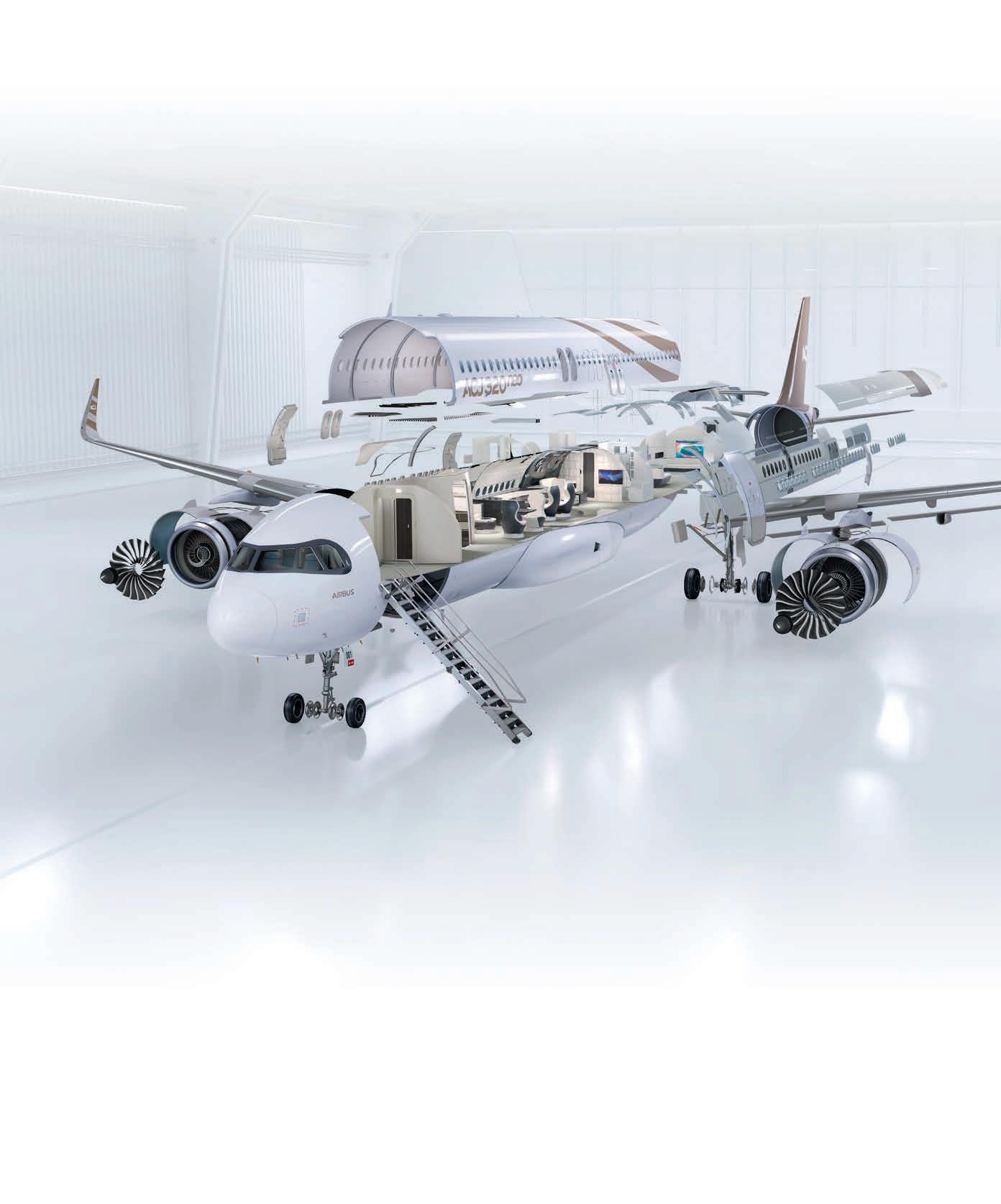
The Covid pandemic’s long-term effects include a renewed focus on mental health’s role in aviation safety and overall wellness, a development welcomed by experts at the Flight Safety Foundation’s Business Aviation Safety Summit (BASS) in May in Savannah, Georgia.
“The silver lining about Covid is that we are recognizing compromises that [result from] stress and [a lack of] mental wellness,” said Quay Snyder, M.D., president and CEO of Aviation Medicine Advisory Service and moderator of the Summit’s Wellness and Mental Health session. “Before it was kind of a secret and now it’s out in the open.”
New approaches to managing psychological wellness on an individual and institutional basis can mitigate risks, as showcased in presentations at BASS. But these issues predate Covid, the experts acknowledged. Stress has long been the number-three cause of pilot disability, Snyder noted. Mental health issues are also among the top five causes of loss of pilots’ licenses, according to ICAO; and some fatal commercial air transport accidents from 1980 to 2011 were most commonly related to psychiatric conditions, including abuse of psychotropic drugs and alcohol, as other panelists pointed out.
But during Covid, anxiety and depression among the general population jumped from a baseline of about 8 to 10 percent to “38 to 40 percent of the population— and that includes pilots,” said Piyush Gandhi, v-p of Presage Group, an aviation safety consultancy.

And, added Snyder, “This is relevant to maintainers and dispatchers. Everyone in the aviation organization su ff ers from
the same conditions and deserves the same support.”
The current approach to mental wellness appears to be to take a holistic view of the state of the psyche as a fluid and dynamic continuum. Previously, it “has been talked about mostly in a negative context,” Snyder said. “The message today is, ‘We want to normalize mental wellness, with proactive programs to put us in the optimal situation to function as well as we can.’”
Snyder also cast safety as a matter of duty, calling it “everyone’s personal responsibility to be safe when you’re flying, from a physical and mental perspective,” though pilots seem reluctant to accept that obligation. When he asked for a show of hands, all session attendees attested to conducting a preflight inspection of their aircraft, but few hands remained up when Snyder asked how many conducted preflight selfassessments of mental fitness.
It’s a simple thing to say. But there’s more to it than a quick greeting. Before we say it’s good, we make absolutely certain it is. With every detail anticipated.
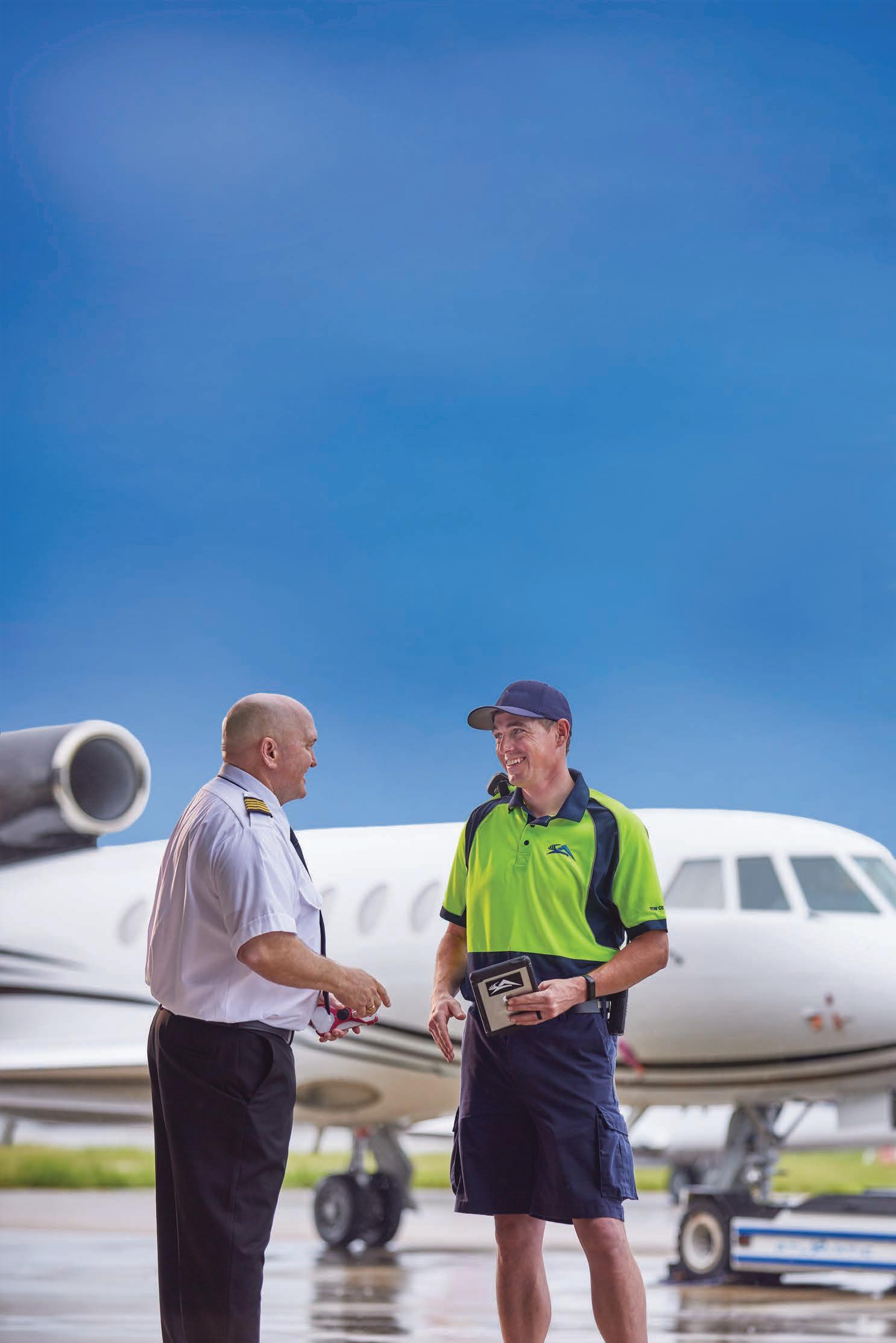
Most pilots “are not willing to check themselves,” Snyder told attendees, asking rhetorically, “Which is the part of our safety system most likely to fail?” He added, “We fail in subtle ways, and that’s changing all the time, so it’s appropriate to reassess our fitness for duty all the time.”

The crash of Germanwings Flight 9525 in 2015 was cited more than once at the summit as a turning point for recognition of mental health’s importance in aviation safety. In its aftermath, the FAA established the Fitness Aviation Rulemaking Committee (Snyder is a member of the medical working group), and EASA launched its analogous Germanwings Task Force. Both groups recommended that operators provide counseling and peer-support programs, and training for aviation medical examiners (AMEs) in recognizing and treating mental health issues among aviation professionals.
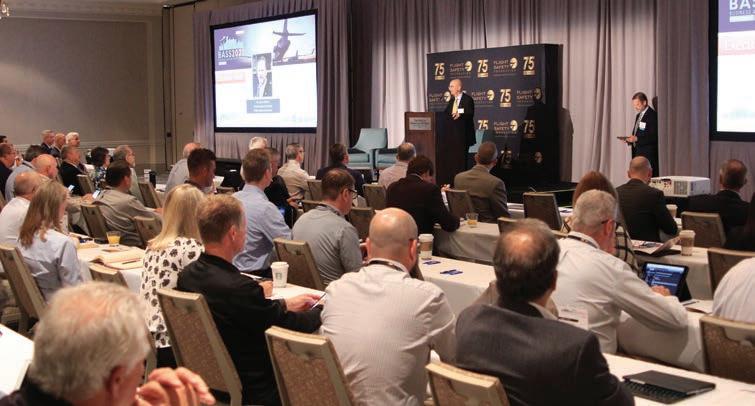
Meanwhile, from 2015 through 2020, the NTSB added a requirement to its annual 10 Most Wanted list of safety improvements: professionals had to be medically fit for duty when operating a vehicle.
Presage’s Gandhi, formerly Bombardier’s chief test pilot, was managing operations at a Canadian carrier at the time of the Germanwings accident. Having previously learned that one of his pilots had been under treatment for suicidal thoughts, though no one at the company had been informed, Gandhi said the Germanwings crash brought home “how important mental health is to all our safety.”
Yet conclusive evidence of the link between mental health and aviation safety is “elusive,” said Gandhi’s boss, psychologist Martin Smith, Presage founder and CEO. “We simply don’t have the data to make a positive connection,” he said. “We have plenty of research data on mental illness, on substance abuse, and degradation of cognitive performance, but not for the pilot population specifically.”
Smith, a former airline pilot, earned a psychology degree in pursuit of his interest in behavioral issues affecting aviation safety; he was trying to discover, for example, “the tipping point at which mental health compromises safety” through behavioral science research and data.
Presage aims to apply the results in operating procedures and protocols for real-world applications. The Burlington, Ontario, Canada company provides operation- specific procedures for some 22 airlines globally and is developing go-around decision-making tools for Gulfstream Aerospace and the Citation Jet Pilots and Owners Association that rethink
traditional stabilized approach guidelines.
Organizationally, commitment from flight department and corporate management, as well as individual pilots and support professionals, is critical to effective mental wellness initiatives, according to the experts’ consensus, but neither group of stakeholders has traditionally voiced interest.
Pilots’ reticence often stems from “our personalities,” Snyder said. “We’re tightlipped, stoic, egotistical,” he noted, adding “obsessive-compulsive” and “problemsolver” to the list of common aviator traits “that make us less likely to ask for help.”
Gandhi noted the high costs pilots perceive they would pay for full disclosure:
fear of the potential impact on their reputation, careers, livelihood, lifestyle, and loss of their identity as a pilot. Even requesting a schedule swap to deal with an emotionally trying situation can provoke a fear of reprisal, he said.
Smith cited new data that quantifies the impact these concerns have on pilot healthcare. Just over 56 percent of pilots reported a history of avoiding healthcare due to fear of losing their aeromedical certificate, according to a study by Hoffman. More than 45 percent sought informal, rather than formal, medical care for that same reason, and more than 26 percent misrepresented or withheld information on a written healthcare questionnaire because of those concerns.
Management, meanwhile, has engaged in collective denial and “chronic and systemic under-reporting” of mental health problems and unrealistic expectations that pilots will report such issues on their own, Gandhi said: “We can’t rely on pilots to self-identify, and EAPs [Employee Assistance Programs], and HR [human resources departments] are not equipped to deal with 40 percent of a population that is suffering from anxiety,” he said.
Gandhi himself, though initially reluctant, goes to therapy weekly, he said,
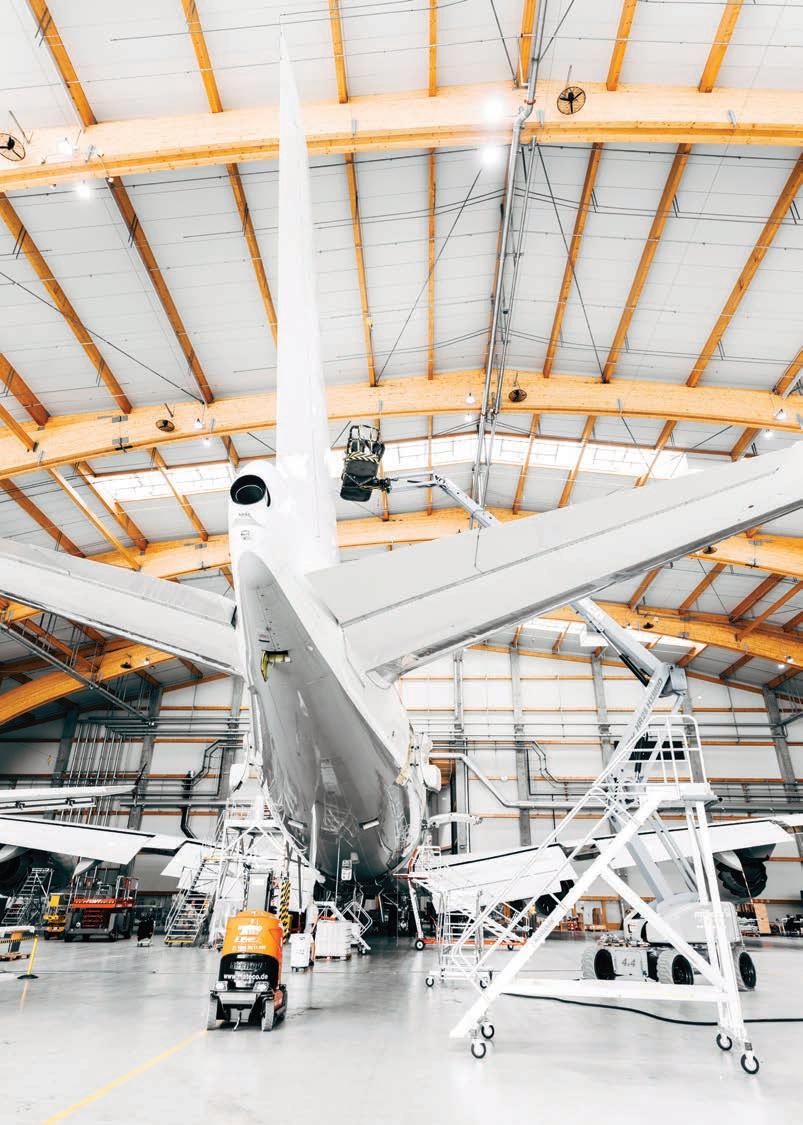
We can’t rely on pilots to self-identify, and EAPs [Employee Assistance Programs], and HR [human resources departments] are not equipped to deal with 40 percent of a population that is su ering from anxiety...
adding, “Now I think anyone who doesn’t see a therapist is crazy.”
Sound policies can encourage employees to seek counseling, and Smith cited three: leadership normalization and endorsement of mental health treatment; an emphasis on early intervention to prevent more severe problems; and treatment tailored to the occupational context, incorporating peer support, and cognitive behavioral therapy. He also said SSRIs (selective serotonin reuptake inhibitors)—a class of drugs on the FAA’s approved list of medications used to treat depressive and anxiety disorders—are “extremely effective” for some individuals.
Adopting a “resiliency strategy, a personal checklist you can take with you,” can also help individuals deal with mental challenges,
In the wake of new EASA rules, Germany’s Stiftung Mayday is increasing access to Critical Incident Stress Management (CISM) counseling for pilots in distress.
Pilots’ mental health care programs are important not only in possibly preventing accidents but in helping pilots recover from them, according to Germany’s Stiftung Mayday (Mayday Foundation), which provides peer support and counseling for pilots, crewmembers, and next-of-kin a ected by aircraft accidents or critical incidents.
Indeed, the greatest need for counseling among pilots usually “originates from a specific incident experienced as critical [that is, perceived as life-threatening] by an individual,” said Hans Rahmann, a director of the volunteer group.
Funded entirely by donations, and supported by ICAO, IATA, pilot unions, and other aviation organizations, Stiftung Mayday’s program is sta ed by all-volunteer peers—specially trained pilots—complemented by professionals. The latter include psychologists, medical doctors, lawyers, and financial advisors, all with a comprehensive
understanding of the aviation environment.
The charitable organization was founded in 1994 after a fatal accident at the ILA Berlin Air Show and established its CISM program in 1998. It aids some 300 people annually, “and it’s growing,” Rahmann said.
“If you are suffering from any symptoms related to such stress, our peers will help you to rebound as quickly as possible,” he said. “Those who may need further support to recover are cared for by professionals. The good news is the success rate for aviators is remarkably high—about 85 percent.”
EASA’s Germanwings Task Force, formed in 2015 following the crash of Flight 9525 in 2015, determined to be deliberately caused by a suicidal co-pilot, brought the ideas and initiatives Stiftung Mayday and other organizations were championing into the mainstream. Among its recommendations, the task force urged operators to provide counseling and peer support programs for pilots and training for aviation medical examiners (AMEs) in recognizing and
treating mental health issues among aviation professionals. EASA regulations adopted in 2021 in response to those recommendations require air operator certificate (AOC) holders to o er CISM peer-support programs for pilots, in addition to programs to address well-being and substance-abuse issues.

Stiftung Mayday is among the organizations, regulatory authorities, AMEs, and others charged with developing program protocols and standards, such as for training, oversight, and licensing requirements. It has also been tasked with helping AOC holders establish and run peer-support programs. However, as a charitable foundation, Stiftung Mayday is precluded from signing commercial contracts, so a commercial organization, HF Human Factor, was founded to handle the contractual aspects of establishing and operating such programs.
Yet despite the progress, “there’s a long way to go” in gaining acceptance for such programs, Rahmann said. “We expect it to be 10 years before it is recognized everywhere in Europe.” J. W.
Smith said. The first part of his suggested four-step strategy is listening to your body and knowing your baseline, and being “mindful of becoming symptomatic when you drift.” Secondly, recognize the triggers that can upset stability (such as death, separation, workplace stress, and family issues), as well as your biases and denial mechanisms that deter you from seeking help. Third, validate your perceptions by asking peers and confidants about your state and behavior. Finally, if evidence indicates you need help, be proactive and “engage a therapeutic option.”

Overall, about 80 percent of mental health issues can be resolved through peer support, Snyder said, and a “huge majority” of the remainder can be treated effectively with counseling.
At the operational level, traditional self-assessments including PAVE (personal/pilot, aircraft, environment, and external pressures) and IM SAFE (illness,
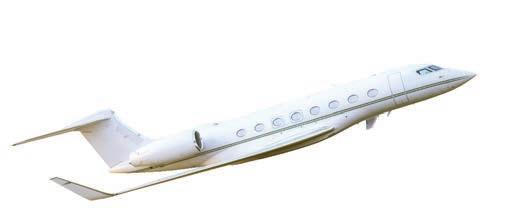
medication, stress, alcohol, fatigue, emotions) still work in a high-tech world, he pointed out.
Signs of evolving organizational attitudes were evident at the summit. During the Safety Leadership Panel, Jeff Wofford, director of operations and chief pilot at CommScope, saw positive signs of change in a strong showing of hands of attendees whose companies had conducted third-party audits in the last two years and in the percentage of those audits that surveyed both corporate culture and corporate climate. But the show of hands revealed that many of the accountable executives were not interviewed during these audits, which he called “disturbing.”
“You can’t just say our director talks to our accountable executive all the time,” Wofford said. “Of course you do—but did you talk about your SMS? Did you talk about how your safety performance indicators are trending? There’s got to
be some type of trail to document that.”
Asked how many believe their organization has a positive safety culture, almost all attendees raised their hands, to which Wofford said, “Maybe you need to uncover more rocks.”
Meanwhile, technological advances promise new safety solutions. At the Future of Business Aviation Panel, Kyle Ellis, manager of NASA’s System-Wide Safety Project, explained ways the digital transformation of air traffic management could enhance the safety and efficiency of air operations but stressed the need for industry collaboration to move ahead.
“Help inform NASA, help us invest our research portfolio into things that actually make a difference for you in day-to-day operations,” Ellis said. “We have an opportunity to have a conversation about the advance of science for safety and figure out what this will look like.” z
SmartSky sets a new standard in air-toground connectivity with technology that mindfully connects the entire aircraft - and everyone involved - with the real-time data they need most.


The return of EBACE as an in-person event after a three-year pandemic-induced hiatus gave Bombardier the opportunity to fully provide the European market with its vision of the future for the first time as a pure-play business aviation company. The Canadian aircraft manufacturer did so by unveiling a medium-term program—a Mach 0.94 Global 8000 that ups the ante on the ultralong-range sector—and revealing a blendedwing concept airplane that could reshape its future line of aircraft, making them more efficient and sustainable.
Bombardier became a pure-play company last year after spinning off the remnants of its non-business aviation units. At the time, Eric Martel, president and CEO of the company, had outlined plans to turn around the debt-laden company, including a decision to keep down research and development (R&D) expenses.
Bombardier had just refreshed its Global lines with the 5500 and 6500 and was working through its ramp-up of the Global 7500, Martel explained. But now, with a stronger financial footing and the recent handing over of the 100th Global 7500, the time was ripe for Bombardier to reveal the next projects that it had been quietly working on within its existing R&D budgets.
The reveals also came as the manufacturer’s rivals had rolled out their new entrants in the ultra-long-range niche over the past year, creating an increasingly competitive field.
Bombardier’s answer is the Global 8000, which will be the fastest (Mach 0.94) and longest-range (8,000 nm) purpose-built business jet. Taking the wraps o ff during a launch event on May 23 at EBACE in Geneva, Martel said the decision to launch the aircraft was taken following customer
engagement. “We listened to the customer. They’re very satisfied with the 7500 but they want more range and more speed. The time is right.”
A development aircraft flew supersonically last year, marking the first time that a civil jet has officially passed through the sound barrier since the days of the Concorde. It was also the first time any transport aircraft had achieved Mach 1 using sustainable aviation fuel. Martel noted, “Bombardier is never complacent with its portfolio. We are always advancing,” but
ruled out any current plans to develop a supersonic business jet.
Bombardier has been discussing the Global 8000 for some time and now development has gathered pace, with an aim of getting the aircraft into service in 2025. The type is intended to replace the 7500, upon which it is closely based, but there will be a period of crossover on the production line.
Flight testing is being accomplished using one of the Global 7500 flighttest vehicles. On May 18, 2021, FTV-5 (C-GLBG) repeatedly achieved supersonic

speed in shallow dives, reaching Mach 1.015. The flight was conducted from Santa Maria in California with a NASA F/A-18 Hornet fighter acting as a chase plane. The supersonic trial was undertaken as part of a campaign to validate the Global 8000 for an Mmo of Mach 0.94—up from 0.925 on the Global 7500.
In terms of range, Bombardier is targeting 8,000 nm for the 8000 versus the 7500’s 7,700 nm. This opens up a number of new city-pairs, including Dubai-Houston, Singapore-Los Angeles, and London-Perth. While the 7500 can make similar long-distance flights in the right conditions, Bombardier’s “no compromise” approach to development will mean that the 8000 has that range consistently available, without a customer having to potentially wait for favorable en-route winds in order to safely make the trip.
When initially talking about the Global 8000, Bombardier envisioned that the aircraft would be a version of the 7500 with length shortened by around eight feet and three cabin zones. During development of the 7500, it became apparent that the type’s transonic wing and aerodynamics would support further speed and range advances without compromise on fuselage length. As a result, the 8000 features the full-length fuselage and, most importantly, offers the same four-zone cabin as the 7500. This is especially important on long-haul flights, when one of the zones can accommodate additional crew members while still leaving three available for passenger accommodation.
While there are relatively few changes from the 7500, there are software modifications and some tweaks applied to the GE Aviation Passport engines. The range improvements come largely from an optimization of the empty weight and the resultant ability to carry more fuel in the existing tanks.
Bombardier said the list price of the Global 8000 is $78 million, up from $75 million for the 7500. It will feature modern
cabin technology and comfort, including a 2,900-foot cabin altitude and the company’s own Pür Air and HEPA filter technology.
Other cabin features inherited from the 7500 include the Soleil circadian lighting system and Nuage “zero-gravity” seats, with a number of configurations for the four-cabin zones, one of which is a principal suite with a full-size bed and stand-up shower. For the flight crew, the aircraft will be fitted with the Collins-based Bombardier Vision avionics suite.
The launch of the Global 8000 is also good news for customers of the 7500, whether their aircraft have been delivered or are still on order. When the 8000 enters service, an optional service bulletin will be issued for the 7500, allowing it to be retrofitted with the 8000’s performance enhancements if the customer so desires. The downtime needed for the retrofit is expected to be less than a week.

While Martel has often discounted potential supersonic entrants—at least in the current regulatory environment—he stressed that most of Bombardier’s R&D funding was dedicated to projects involving sustainability. And also during EBACE, Bombardier offered a glimpse at what it thinks could be the future of business jets: a blendedwing body design that forms a key part of its new Eco Jet sustainability initiative. The company revealed a small-scale model it has been using for extensive flight and wind-tunnel testing as it seeks to refine the technology it views as integral to its longterm product strategy.
In the shorter term, Bombardier is also employing this model as a testbed for improvements that could be introduced more incrementally to existing aircraft.
After writing Blue Water Ditching in 2012, I have continued my education on the subject of aircraft emergency water landings by speaking with industry experts in our field. There are several concepts that need to be shared.
To remind pilots of the why, I point out that during the 1940s, 1950s, and even into the 2000s, we trained ditching. Because it happened. Today, because of greatly improved engines, fuel systems, electrical grids, pressurization systems, fireproof cabins, etc., the risk has reduced to near zero. Training for ditching has been relegated to the back burner and some companies have pushed it completely off the stove.
Predicting problems has never been easy in any industry, but to say a multi-engine aircraft will never ditch…well a DraftKings, Vegas, or Ladbrokes bookmaker probably cannot figure the odds. Over the years we have always tried to think ahead for the industry, and there are a few situations that could lead to the disaster.
A volcanic ash encounter, for example. The Tonga volcano eruption in January occurred 650 feet below the ocean surface. The explosion lasted nine minutes and 50 seconds sending flying molten rock at supersonic speeds, creating sonic booms, and propelling an ash cloud to more than 100,000 feet that expanded to 160 nm wide. I remind everyone that the Ring Of Fire stretches from the southern Pacific Ocean, past Japan, across southern Alaska, and all down the western coast of North, Central, and South America.
Other issues that could result in engine loss are heavy bird encounters, hail,
BY DAVE MONTGOMERY CORPORATE PILOT (RETIRED USAF COMMANDER)off-airport landing or a water ditching, turn on the ELT. Immediately! This should be (although it is not) the first step on every aircraft manufacturer’s ditching checklist.
Modern aircraft are equipped with 406Mhz transmitters that talk to the satellites. Within minutes after flipping the switch, the robust worldwide search and rescue organizations are looking at you and they see your location, altitude, heading, and speed. Rescue control centers are deciding their next step: call local authorities, launch aircraft and Coast Guard ships, or direct maritime vessels.

Before you land on the water search and rescue authorities have the current sea state, water temperature, tide drift speed, and surface wind direction from worldwide anchored buoys. They even have access to classified data such as “where are navy ships today?” If you flip the switch, you don’t need to relay the same information three times to aircraft overhead, which wastes valuable time.
uncontrollable fire, and fuel leaks. We are pilots, and pilots like to know and train for everything that can happen to us and our flying metal tube.
So when was the last time your chair flew or simulator re-enacted the 30 minutes of a ditching scenario?
The first and most important technique I have learned and now teach is this: if you are ever in the position of an
Second, the greatest aid ever invented for ocean-crossing crews is an application—Ergo Blue—that has been on the drawing board and in testing for years. Today, it works perfectly and should be on every pilot’s iPad. Pilots can enter their coast-out and coast-in points, and Ergo Blue will display in real-time all the ships moving on the water along their route.
If you are on the Atlantic routes, crossing the Gulf of Mexico, en route to Australia, or transiting the Arctic Ocean on your way to Nur-Sultan, Kazakhstan, think about the security of knowing you can find and ditch near a ship. To quote Jim Stabile, CEO of Ergo developer Aeronautical Data Systems,
... if you are ever in the position of an oairport landing or a water ditching, turn on the ELT. Immediately! This should be (although it is not) the first step on every aircraft manufacturer’s ditching checklist.
“[The app] significantly expands the ditching envelope…Ergo helps you ditch at night, low ceiling and visibility and gets you as close to the ship as possible to reduce time of rescue.” You have just cut your time in the raft to possibly hours versus days.
Hopefully, soon, the map displays on our flight deck panels will be able to show a new overlay—“maritime”—depicting the ships and oil rigs below us. (Are you listening Garmin, Universal, Honeywell, Dynon, Collins, Thales, etc.?) Here is something you might not know; ocean-crossing ships have transponders just like aircraft, which is where Ergo receives its information. To see what this looks like, visit marinetraffic.com and click on the live map.
Third, while working on my last presentation I compiled pictures of land aircraft ditched on the water. They prove how survivable a ditching is and open a new line of thought about buoyancy and how it relates.
I simplify buoyancy as the battle of float versus weight. Float occurs as the fuel tanks have some air and are trying to hold the aircraft on top of the water. Weight is trying to drag the aircraft under. It is a battle to see who wins.
As I pondered the pictures I focused on what was happening. The weight usually wins, but not immediately. And as it wins, it has great leverage on the metal tube. That leverage may be our enemy. Aircraft with forward-mounted engines (Piper, Cessna, King Air) almost always nose over and are pulled underneath the surface in a straight down posture. Weight overcomes float.
So what is the posture of aircraft with underwing engines (Boeing, Airbus)? I find two great examples. First is the Boeing 707 in Lake Victoria in Africa, which floated for days, right side up, and never tilted in any direction. The weight never overcame the float—the wing tanks were empty, so it had positive buoyancy.
The second example is US Airways flight 1549, the Airbus in the Hudson River. Initially, that aircraft also floated right side up. There was minimal buoyancy as the tanks
contained a lot of fuel and little air. Eventually, the jet sank as it filled with water—the fuselage filled due to an accidentally opened rear door—and the weight of the structure overcame the float, an example of negative buoyancy. Underwing mounted engines have little leverage on the fuselage. They are pulling straight down on the wings.
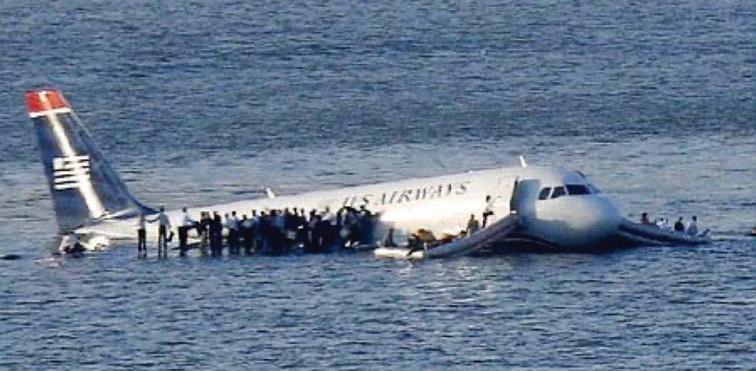
This brings me to my main point and the significant question. Those in the business jet industry mainly fly rear-mounted, twoor three-engine aircraft. How will they float? I found zero pictures.
During my last three type rating training events, the evacuation training centered on escaping through overwing window exits. Two type ratings came in the last five years—the Embraer Phenom 300 and Cessna Citation Latitude. Both of these jets have a water dam located along the floor in front of the main entry door. The dam is raised before opening the main entrance door if you are on the water.
It seems laughable to think this eightinch dam keeps any water from entering the cabin. But why? Well, think about the battle of buoyancy versus weight. The heaviest part of the aircraft is the engines, and rear-mounted engines and systems mean the tail is the heavy end. Maybe the engineers have determined the float posture requires the water dam because the overwing window exits may not be useable? Aircraft manufacturers need to
explain this, and I suggest they have— hence the water dams.
Next time you are on the ramp with your aircraft, stand 30 feet off the wingtip and ask yourself how would this machine float? Use your knowledge of center-of-gravity concepts as you analyze the distribution of weight. It is eye-opening.
In closing, I bring up a sticky subject on radio operations. Frequency spectrums have limits. In the VHF range, multiple agencies own parts of the spectrum and aviation owns 118.0 to 136.97. The Federal Communications Commission says never shall the parts overlap.
In New York on Sept. 11, 2001, the fire department could not talk to the police and vice versa. So I ask the FCC and the FAA why can’t your agencies work together and allow aviation radios to tune in the maritime band international emergency frequency (156.8)? If a crew faces a ditching, a pilot can press the emergency/maritime button on the control head and broadcast on the frequency to make the mayday call to a ship before landing. It takes miles to stop a ship moving at only 10 knots, and every minute counts.
Maybe that button could transmit on 121.5 and 156.8? Then even after you land, you can still talk to the ship. There are great reasons to make this happen. Let’s think outside the box now, instead of thinking about it after we need it. z
While improvements in aircraft design and technologies will ultimately give rise to new methods of flight such as electric and hydrogen propulsion, it is sustainable aviaton fuel that represents the biggest potential for carbon reductions in the short and mid-term horizons. But that’s only if production can be scaled up enough to provide meaningful amounts.
In the U.S. last year, the Biden Administration issued the SAF Grand Challenge to encourage the domestic production of at least three billion gallons of SAF per year by 2030. That represents a dramatic increase over current worldwide production, which is estimated by the Commercial Aviation Alternative Fuels Initiative (CAAFI) to reach approximately 600 million gallons of 100 percent (neat) SAF by the end of 2022. By 2025, that total is expected to more than triple to about two billion gallons
based on currently announced projects. Included in those developments is a $2 billion upgrade to the World Energy facility in Paramount, California, that will see the former petroleum refinery fully converted to sustainable fuel production and give it an output capacity of 340 million gallons a year by 2025. Also in California, Phillips 66 has decided to convert its San Francisco-area refinery from petroleum to renewable fuels. The $850 million project will produce an initial 800 million gallons a year of renewable transportation fuels starting in the first quarter of 2024.
Last week, a consortium of energy industry companies led by SGP BioEnergy announced it partnered with the Panamanian government to launch what will become the world’s largest biofuel production and distribution hub. Dubbed the Golden City Biorefinery, the facility is expected to begin production in 2024
at an output of 60,000 barrels per day initially, expanding to a full capacity of 180,000 barrels daily, or 2.6 billion gallons annually, of sustainable fuels—including SAF—derived from purpose-grown plant oils and waste fats by 2027.
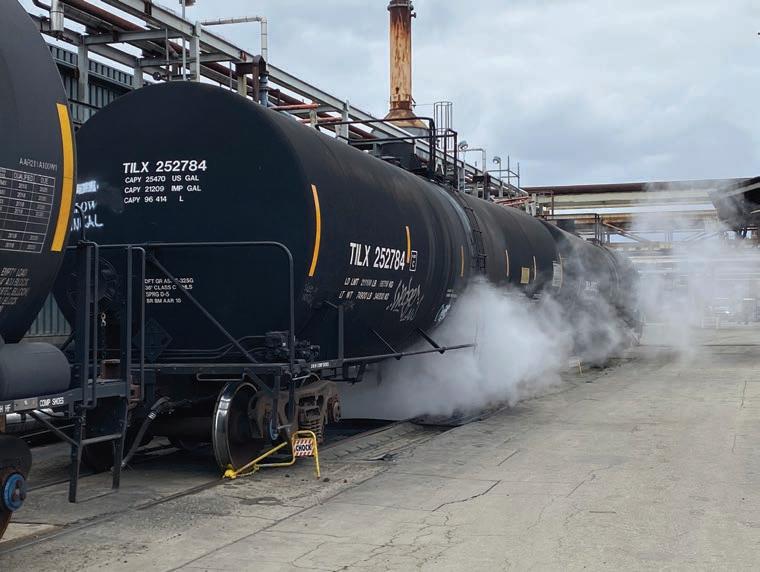
Major renewable fuel producer Neste recently announced it is modifying its Rotterdam, Netherlands, refinery to better enable SAF production. Currently, the facility is geared mainly toward renewable diesel output, but the nearly $200 million upgrade will give it the option to produce up to 500,000 tonnes of SAF a year as part of the existing capacity. Combined with the company’s ongoing Singapore refinery expansion, Neste will have the capacity to produce 1.5 million tonnes of sustainable aviation fuel annually by the end of 2023.
SAF is approved for use in blends with conventional jet-A at up to 50 percent, but tests by airframers, engine manufacturers, and operators are ongoing to someday enable 100 percent SAF usage. At that level, the fuel can provide lifecycle carbon emission savings of up to 80 percent compared to standard petroleum-based jet-A. Typical blends in use today are 30 percent SAF.
In Europe, proposed as part of the European Commission’s Fit for 55 climate package, the ReFuelEU Aviation regulation would impose a mandate on fuel suppliers to make SAF available at EU airports. While the current supply of SAF is less than 0.1 percent of industry volume worldwide, starting in 2025 the obligation would require 2 percent of the overall aviation fuel supply to consist of SAF, gradually increasing to 63 percent in 2050.
Some countries such as Norway have already initiated quota mandates on the use of SAF. However, the European Commission noted that while sustainable aviation fuels have the potential to significantly reduce aircraft emissions,
this potential is largely untapped. That is because such fuels represent a very small percentage of total jet-A consumption.
According to business aviation sustainability advisory 4Air, which provides an online SAF-tracking map, the eco-friendly fuel is available at a handful of locations in the UK, including Luton, Biggin Hill, and Farnborough airports in the London area, and Hawarden Airport in Chester. In a demonstration last year, Neste-provided SAF was introduced at Gatwick Airport for commercial aircraft use.
Across the English Channel, business aviation operators can find SAF at Paris Le Bourget and Clermont-Ferrand Auvergne airports in France, and at Amsterdam Schiphol Airport. Among the newest locations is Vienna International Airport after Miami-based AEG Fuels recently announced it has partnered with Austrian aviation fuel producer OMV to provide SAF to the airport through the latter’s direct pipeline to the airport.
OMV’s SAF is produced at its Schwechat refinery with used cooking oil collected by local firm Münzer Bioindustrie, which makes the production chain as regional as possible and reduces transport considerations to cut emissions. The two companies will market the fuel for on-demand sales mainly to the general aviation market.
There are seven pathways approved by ASTM International for the production of SAF. But, according to CAAFI executive director Steve Csonka, at least 15 more processes are in the pipeline toward earning approval under ATSM D7566—the specification for jet fuel. The certification of additional production processes will continue to expand SAF supply, he said.
These processes use a wide range of feedstocks, with one of the crucial considerations being that they do not compete with food products. World Energy uses beef tallow with seemingly-endless trains of railcars of the meat waste flowing into
its Los Angeles-area facility. Used cooking oils and grease from animals and plants are used by Neste to manufacture its MY Neste fuel.
Earlier this year, bp began co-processing SAF alongside conventional crude oil stocks at its Lingen, Germany refinery. It is the first industrial production facility in the country to use co-processing, which allows up to 5 percent SAF feedstock to be incorporated into the mix.
Other potential sources include municipal solid waste (household garbage); recycled construction materials; agricultural waste, such as corn husks and grain hulls; forestry waste; salt marsh grasses; seaweeds and algae; fermented sugar cane juice; non-food, high oilseed crops, such as camelina, carinata, and jatropha; and even non-recyclable plastics.
Hitting on that last note, London-based renewable fuel startup Clean Planet Energy (CPE) launched a new SAF produced from plastics that would otherwise be simply incinerated or put into landfills. CPE has a production plant already under construction in Teeside in the UK and as many as 11 more under development worldwide.
Through CPE’s proprietary process, plastic hydrocarbons are broken down into small chains, which are then upgraded into new products such as SAF and petrochemical feedstocks from which new recyclable plastics can be manufactured. Bp just signed a 10-year offtake agreement for the output of the Teeside facility, which can process 20,000 tonnes of waste plastic a year.
SAF is uniquely clear-looking and burns cleaner than traditional oil-based jet fuels, o ering further environmental benefits.
The company has been advocating for the limit of SAF feedstock co-processing to be increased to as much as 30 percent, according to Laura Bowden, Air bp’s global marketing manager. “We think that will benefit global [SAF] supply given the number of existing refineries today that can, over time, transition from fossil feedstocks through to sustainable feedstocks as well.”
Like many fuel providers, bp is betting heavily on renewable fuels as it estimates conventional oil and gas production is expected to decline by 40 percent from 2019 levels by 2030. In its fourth-quarter earnings call, bp anticipated its investment in five major biofuels projects, including the conversion of up to two refineries.
When it comes to feedstocks, even the air itself can be used. A team of Swiss researchers at public research university ETH Zurich announced last year that they have developed technology to produce SAF using nothing but air and sunlight.
Their sun-to-liquid process converts the compounds carbon dioxide (CO2) and water (H2O) into CO and H2 in a specific ratio known as syngas. The final step converts the syngas into liquid hydrocarbons. By tailoring the syngas composition, the researchers were able to produce either drop-in synthetic methanol or kerosene that would be fully compatible with existing infrastructure and fuel supplies.
A spin-off company known as Synhelion has licensed the technology and is building the first industrial facility for the production of carbon-neutral solar fuel in Jülich, Germany, with the start of fuel production anticipated as early as next year. z

 BY MATT THURBER
BY MATT THURBER
Airbus has opened the ACJ TwoTwenty creative studio at its headquarters in Toulouse, France. Adjacent to the fuselage mockups for every Airbus model in Toulouse, where airlines can select interior configurations and materials, the creative studio is designed to help buyers finalize the interior for their new ACJ TwoTwenty.
“We are extremely proud to open this unique creative studio for our customers,” said Airbus Corporate Jets president Benoit Defforge. “It is important to make them feel the space and ultimate comfort it is bringing, thanks to the latest technologies
we offer our customers, a real-time and immersive design experience.”
The development of the creative studio stemmed from discussions among Airbus Corporate Jets team members and customers as well as Comlux Group, which is the exclusive completion center for the first 15 ACJ Two Twentys. These will
be done at Comlux’s Indianapolis, Indiana, facility.
Because there are not yet any fully completed ACJ TwoTwenty demonstrators available, according to Chadi Saade, Airbus Corporate Jets vice president commercial, the company needed a way to help customers visualize the airplane’s expansive cabin and decide on how they want it outfitted. “This is extremely important,” he said. While the creative studio will always complement seeing the actual aircraft, he added, “This is a great first step while waiting for the [demonstrator] aircraft. This will be an efficient tool to finalize
The customer needed lots of support. Now the customer goes in the integrator and decides what it looks like. It’s way di erent than what we were previously doing and like what others are doing.
the design and selection of options.”
Airbus has taken a different approach with the interior design of the ACJ TwoTwenty. Where buyers of other ACJ models can customize their aircraft starting from a completely bare interior, ACJ TwoTwenty buyers begin by choosing a configuration for each of the six zones then selecting from hundreds of fabric, carpet, wood veneer, and plated metal finishing options.
The online configurator allows buyers to click on various furniture layouts for each zone, including the full kitchen (galley). During their visit to the creative studio, buyers can see what their layout looks like in a full-size projection of the cabin on the floor of the studio. After donning a virtual reality (VR) headset, the customer can not only walk through and view the layout in 3D but also see and compare the materials choices, integrated into the VR view, as well as lighting effects. To help get started, customers can select one of three optional cabin designs or a special Cyril Kongo edition.


“We predefine the options for the cabin,” said Sylvain Mariat, head of Airbus Corporate Jets creative design. “It was a huge discussion to make something easy for customization [of the cabin]. The creative studio is an extension of the concept of the A220, with a lot of high-end tools and the latest technology for the customer to choose their interior. It was very exciting in my life and work in Airbus to design this kind of specific project. The result is very magic. We can go very far in customization, and in the end make something unique, depending on the customer’s taste.”
“Previously we had a fully customized cabin on the ACJ319 and ACJ320,” said Saade. “The customer needed lots of support. Now the customer goes in the integrator and decides what it looks like. It’s way different than what we were previously doing and like what others are doing. But it doesn’t mean they can’t customize their interior. There are 200 different
In Airbus’s creative studio, AIN editor-in-chief Matt Thurber tries out the virtual reality ACJ TwoTwenty interior, where materials, colors, and lighting e ects can quickly be changed.
colors and fabrics they can choose from. That’s fine-tuning. The bulk of the customization is done [with the configurator] then the customer gets into the general ambiance with their own designer or with the help of Sylvain.”
With 786 sq ft of floor space, the ACJ TwoTwenty offers “double the space and volume of any competitor aircraft, according to Airbus, while the jet’s external footprint is just slightly larger than its
ultra-long-range, large-cabin, purpose-built business jet competitors. The creative studio illustrates these differences, to show potential buyers how the larger ACJ TwoTwenty cabin compares to its ultralong-range jet competitors. One of the key differences is because the ACJ’s engines are mounted on the wing, and thus the cabin extends further aft, with much less space needed for equipment. A typical business jet with tail-mounted engines
requires a significant amount of space in the aft fuselage for engine-related hardware and components, but that isn’t the case for a jet with wing-mounted engines. In the ACJ TwoTwenty, this characteristic adds 25 feet to the cabin length.
Cabin width of the Airbus jet is 10 feet 8 inches and height is 6 feet 6 inches. Volume is 5,210 cu ft. Airbus compares the ACJ TwoTwenty’s cabin to the largest purpose-built business jets, the Dassault Falcon 10X, Bombardier Global 7500, and Gulfstream G700. The 10X’s cabin is 9 feet 1 inch wide and 6 feet 8 inches tall. The Global 7500’s cabin is 8 feet wide and 6 feet 2 inches tall. The G700 cabin is 8 feet 2 inches wide and 6 feet 3 inches tall.
The ACJ TwoTwenty can fly 5,650 nm or 12 hours carrying eight passengers and has a maximum altitude of 41,000 feet. Typical cruise speed is Mach 0.78 and maximum operating speed Mach 0.82. This is slower than the ultra-long-range jets, which offer long-range cruise speeds of about Mach 0.85 and high-speed cruise of Mach 0.90, with maximum altitudes of 51,000 feet.
Another feature in the creative studio is a mockup of a cabin section fitted with retractable size-comparison blade-like elements that illustrate the difference between the ACJ TwoTwenty and competitors’
cabins. With the blade elements retracted, the customer can see how movable demonstration chairs fit into the ACJ TwoTwenty cabin, then with the blades extended, compare that same seat layout and see how it fits in the smaller business jet cabin.

footprint of the ACJ TwoTwenty is only slightly larger. Overall length is 114 feet 9 inches and wingspan 115 feet 1 inch. The Global 7500, by comparison, is 111 feet long and has a wingspan of 104 feet. Tail height may be an issue for ACJ buyers, however, as many business jet hangars are designed for sub-30-foot-high airplanes. The ACJ TwoTwenty’s tail height is 37 feet, 8 inches.
“It’s two to three times the size of other aircraft for the same acquisition price,” said Saade. “On top of that, it comes with 30 percent lower operating costs. The experience you can have onboard is unique, the space is unique. I really believe it’s going to be a game-changer.
“This is an important market for us,” he said. “The kind of customers who had a [traditional ultra-long-range jet] said, ‘If I can have the same thing for the same price at twice to three times the cabin size, with a proper bedroom and dining table, it’s a no-brainer.’ The experience you can have onboard is unique, the space is unique.”
“There is still room for the others [competing jets],” said Mariat, “but for once we can compete head-to-head [with them].”
Compared to large business jets, the
While the ACJ TwoTwenty burns more fuel, “it is cheaper to operate,” Saade said, because its maintenance costs are lower. There are so many A220s in airline operation that parts cost less and maintenance and training are widely available anywhere in the world at reasonable prices, according to Saade. The ACJ TwoTwenty’s two 24,000-pound-thrust Pratt & Whitney PW1500G engines are designed to rarely if ever be removed for maintenance. “[Operators] will probably never have to remove an engine,” he said, given the fewer number of flight hours that business aircraft typically fly. Also contributing to the lower operating costs is the ACJ TwoTwenty’s low-use maintenance program.
Airbus has already seen commitments for five ACJ TwoTwentys this year and 10 total orders since the jet was launched. “We didn’t see a slowdown [during the pandemic],” Saade said. z
I really believe it’s going to be a game-changer. At the ACJ TwoTwenty creative studio, a full-size cabin mockup is fitted with retractable elements (right) that help illustrate the di erence in size between the ACJ TwoTwenty’s cabin and typical modern ultra-long-range business jets.
Among the companies making their EBACE debut this year was Titan Fuels, one of the largest aviation fuel distributors in the U.S. In business since 1975, the North Carolina company is now looking to expand its operations into Europe and beyond through its acquisition in April of Akryl, an aviation fuel reseller with a worldwide digital fuel procurement platform based in Geneva.
While Titan fuels a network of more than 500 FBOs in the U.S., the situation in the rest of the world is different from what it is used to, according to Akryl founder Daniel Coetzer, who will serve as CEO of Titan Europe. Outside of North America, fuel is typically provided by airports, fuel companies, or resellers, rather than the FBO-centric model. This deal will allow the expansion of the Titan contract fuel program to U.S.- and Canadian-based customers traveling abroad. “It was ideal for Titan to purchase a local business that knows the business, [and] when the approach from Titan came, it was a perfect fit,” Coetzer told AIN. “Obviously they have their customers in the U.S. which now will have the network in Europe, the Middle East, Africa, and Asia.”
A long-time veteran of the European aircraft fueling business, Coetzer began his latest venture, Akryl, in 2020 at the height of the pandemic. Plans to announce the launch at that year’s EBACE were scrapped when the show, like virtually every other in-person event in the world, was canceled.

Despite those headwinds, his company amassed a customer base of approximately 500 aircraft tail numbers that Akryl will bring into the Titan network. Through this agreement, when those aircraft fly to the U.S. they will already be familiar with the Titan brand.
In terms of the record-high fuel prices the industry is experiencing, Coetzer believes the situation will not resolve itself soon. “The fuel price I believe is still going to go a little bit up, I would say another 20 to 30 percent, and then it is going to settle down because I think
the Middle East will start to fill the gaps a little.” Coetzer expects prices to begin receding early next year, leaving operators with several more months of pain at the pump.
Though many are promoting the benefits of sustainable aviation fuel (SAF), Coetzer notes that the aviation industry is walking a fine line between encouraging and supporting the SAF producers and pursuing nearterm sustainability goals.
“The [SAF] supply and the distribution in Europe are very difficult,” he explained. “It’s very rare to find it, and if you find it, it’s very expensive, so I think the best option for business aviation at this time is using carbon offsets as an alternative. It’s not that expensive and the price [of fuel] is already high, so carbon credits add another 10 or 20
DANIEL COETZER CEO Titan Europecents to the price but, at least you are green and it goes into a carbon offset program.”
Electrification and hydrogen power, may eventually provide strong sustainable solutions, Coetzer stated, “but we are still in with oil for a very long time.” z
A JETNET subscription will provide you with original, extensive and continuous research on jets, turboprops, pistons and helicopters. Our products and services are tailored to your needs, giving you relevant results, daily. When you know more, and know it sooner, you’ll be ahead of the competition every time. If you’re ready to take the next step, we’re here to help your business grow. Request a demo today at JETNET.com.
KNOW MORE.
The World Leader in Aviation Market Intelligence 800.553.8638 +1.315.797.4420 +41 (0) 43.243.7056 jetnet.com

“Social inflation,” sharply increased jury awards and claims, and aircraft groundings are all taking a toll on aircraft insurance premiums, which jumped by 20 percent for the general aviation sector last year alone, according to participants at the recent Aviation Insurance Association conference.
Returning as an in-person event for the first time in more than two years, the conference brought aviation insurance brokers, underwriters, and attorneys to Nashville, Tennessee, from April 29 to May 2 to discuss the effects of the pandemic, increasing claims costs, and aircraft groundings on nearly all facets of the indusry.
Jeff Bruno, president and chief underwriting officer for U.S. operations at Global Aerospace, cited numbers from the McKinsey & Company Global Insurance Report 2022 indicating that during the year general aviation entities paid $2.6 billion in insurance premiums, airlines $1.7 billion, manufacturers (product liability) $1 billion, space $450 million, and war policies $250 million.
The U.S. general aviation (USGA) total premium collected increased 33 percent from 2018 to 2020, reportedly “the largest
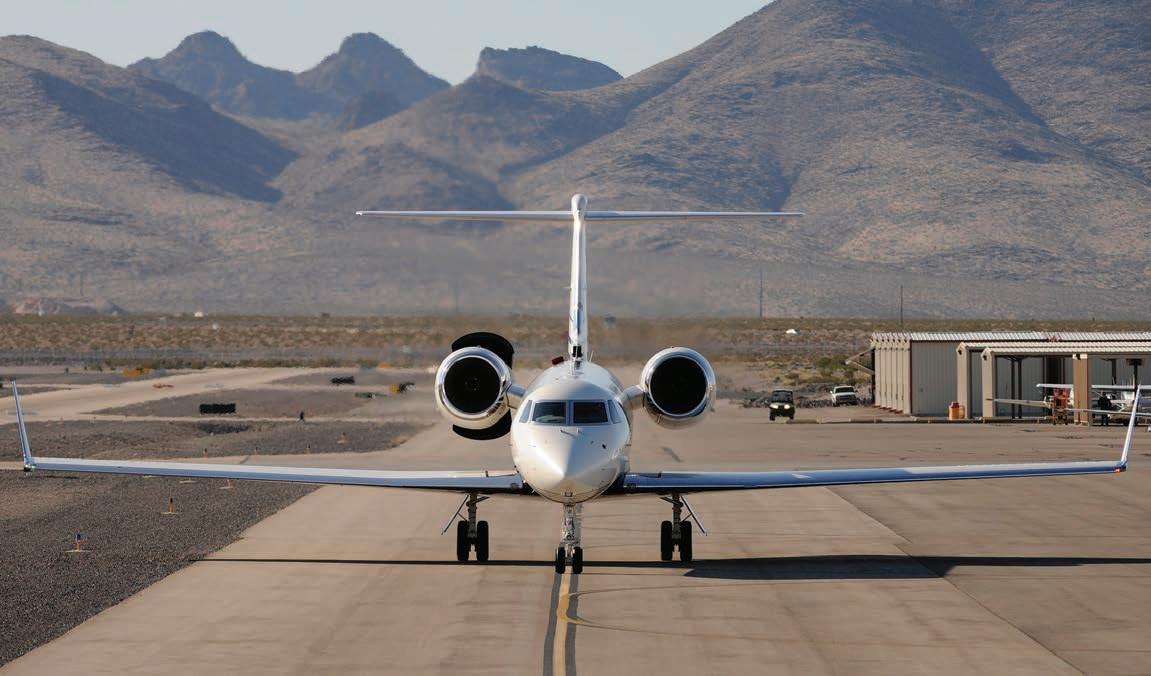
increase in written premium for the USGA market since the period immediately following 9/11,” according to Milliman’s U.S. General Aviation Admitted Market Summary of 2020 Statutory Financial Results report (with data collected through July 2021). Total general aviation premiums jumped another estimated 20 percent in 2021 from $2.1 billion to $2.6 billion.
Despite the increase in premiums and the initial reduction in flying during Covid19 shutdowns, general aviation insurers in the U.S. still lost approximately $52 million in 2020 alone. Compared with the $285 million loss in 2019, it was a “good” year; U.S. general aviation insurers lost a total of
$693 million before expenses and reinsurance in the five policy years between 2016 and 2019. In the same five-year timeframe, airline insurers lost $50 million, even including a $300 million profit blip in 2020.
“There’s definitely some headwinds for insurers,” said Bruno. “While we were all paying attention to Covid, we went to sleep on some of these issues that haven’t gone away. A $100 million claim used to be a one-in-20 kind of event, then it became a one-in-10 event. Now I think it’s less than one-in-five. We’re actually seeing a couple of these a year now.”
The increasing frequency and dollar amounts of high-value verdicts is one factor in the hikes in claims costs. From the dancer awarded $143 million in 2017 when a bus platform at O’Hare International Airport collapsed, to the family of a United Airlines wing walker hit by a fuel truck at a Houston airport awarded $353.7 million (the family had asked for $1 million), “nuclear” awards of more than $10 million are so commonplace that plaintiff lawyers are routinely asking for—and receiving— judgments of more than $100 million.
“There’s been a paradigm shift,” said Nicole Wolfe Stout, partner at Strawinski & Stout in Atlanta. “Years ago it was the plaintiff’s lawyer that was saying, ‘I can’t afford to take this to trial.’ Or they would have to do a cost/benefit analysis. Now [defense lawyers] are saying we can’t take this to trial instead of ‘should we take this to trial?’”
The term “social inflation” has been coined, and was used throughout the conference, to denote the increased loss costs stemming from claims that are exceptionally more severe than anticipated. Sparked by a shift in societal norms where younger, educated, and more socially “aware” jurors parlay their distrust of government and dislike for corporations into sensational judgments that can then be bandied about on social media, social inflation has rapidly
escalated single-plaintiff judgments to heights previously thought absurd.
“Quiet voices now recognize that they have a voice in our society,” said Marissa Beyers, CEO of Trial Behavior Consulting. “[They] use Facebook to schedule the protest, Twitter to coordinate, and YouTube to tell the world…and if they can make that voice heard by returning a verdict against big, bad corporate America, they’re thrilled to do so.”
The result is that in cases normally worth $2 million, plaintiff attorneys are setting opening demands for $100 million, especially if the defendant is any type of government or corporate entity, including the insurance companies.

“You can find yourself in the situation with a $100 million demand on a $2 million case,” said Ted Green, global head of aerospace claims for AIG. “I’m aware of more than a handful of cases where some very serious money was offered by the defendants; plaintiffs still went to trial and we wound up with verdicts way beyond the $100 million pre-trial demand.”
Plaintiff attorneys routinely use a “reptile” theory made popular by the book, “Reptile: The 2009 Manual of the Plaintiff’s Revolution” written by attorneys
MARISSA BEYERS CEO, TRIAL BEHAVIOR CONSULTING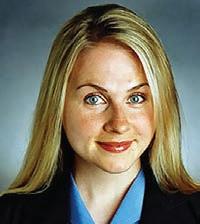
David Ball and Don Keenan. The book, now selling used on Amazon for nearly $1,200, teaches plaintiff attorneys how to subtly get jurors to decide the case emotionally; the International Risk Management Institute (IRMI) defines the reptile theory as “focusing the jury’s reaction to instinctively favor safety and survival of their families and community (versus plaintiff ’s actual injuries) by demonstrating the defendant’s conduct endangers their families and community as a whole.” Rather than focusing on the plaintiff ’s injuries or how the accident occurred, “reptile” lawyers typically present safety rules at the outset of litigation—perhaps from state or federal statutes, industry standards, or employee handbooks—and then box the defendant into admitting a violation of these rules, whether that violation directly contributed to the injury or not.
“Frankly, I think the defense bar is behind in this challenge,” said Stout. “We’re seeing an immense amount of coordination in the plaintiff ’s bar to capitalize on fear, uncertainty, and anxiety, particularly in the last two years with Covid-19. So our traditional defense tactics with picking juries have not caught up. Typically, we would rely on more conservative
Quiet voices now recognize that they have a voice in our society...
people on the jury to side with corporations and believe in personal responsibility, and that’s fallen by the wayside. Instead, we’re seeing just general anger toward corporations.”
Thanks to social media and internetbased news feeds, social inflation is not limited to the U.S. “Foreign claimants are well aware of what’s going on in the U.S. in terms of jury verdicts,” said Armando Carlo, director of insurance litigation and claims at Boeing. “A recent example came up in negotiations where the plaintiffs argued, ‘We know George Floyd’s family got $27 million so we want at least $27 million because your company killed our family members.’ I don’t know if it’s coming from the claimants themselves or the plaintiff ’s lawyers… but it definitely impacts the negotiations.”

Some plaintiff law teams are asking for high-dollar verdicts not because the damages warrant the judgment, but because their litigation financing contract requires a certain payout. Bruno cited a November 2021 Bloomberg article that indicated investment by hedge funds, private equity firms, and sovereign wealth funds in “high stakes court cases” reached more than $39 billion worldwide as of 2019.
“Venture capital firms are actively seeking out plaintiffs, bringing the best resources to bear, and pushing for trial verdicts with a real reluctance to settle in order to get a proper return on their investment,” Bruno said. “We think it’s unethical, and we insurers who are defending your clients feel like we’re fighting with one hand tied behind our back. It’s a real problem.”
One leader in litigation financing is Burford Capital, which claims to be the “largest and most experienced provider of commercial legal finance in the world.” Founded in 2009, the company funds the costs and expenses of litigation or arbitration, with more than 1,000 “matters” in its current $5.1 billion investment portfolio and a 96 percent return rate on concluded matters. Burford’s website says it
allows law firms to “manage budgets and costs,” citing an example of a law firm that “bridged the gap between its hourly fees and a client’s budget—and won a $110 million award.”
“We need to educate the general population about these funding agreements because we can’t get it into evidence unless the [testifying experts] are in on it,” said Stout. “In some jurisdictions, we can cross-examine on the fee protection agreement to show bias, but the challenge here is how do we get an evidentiary benefit to acknowledge the reality of the situation.”
Another hot topic in the aviation insurance industry is the increased level of losses due to the grounding of aircraft fleets. While the insurance industry has offered full and partial grounding liability coverage to aircraft OEMs and first-party aircraft
grounding coverage to operators since the worldwide grounding of de Havilland Comets in 1954, there were almost no claims for decades. The coverage, which for OEMs is generally underwritten as part of an aviation general liability policy with no additional premium collected, only comes into e ff ect if a regulatory authority grounds a certified aircraft from all operations due to an “existing, alleged or suspected condition affecting the safe operation of such aircraft,” according to verbiage by the International Union of Aerospace Insurers.
Although the parking of airline fleets during the pandemic did not trigger this specific grounding liability coverage in most aviation insurance policies, the industry has still taken big hits from the increased willingness of government regulators worldwide to ground entire aircraft fleets in recent years. According to Bill Kingsley, account executive at AssuredPartners Aerospace in Plano,
While we were all paying attention to Covid, we went to sleep on some of these issues that haven’t gone away… KIM ROSENLOF



Texas, the frequency and severity of aircraft groundings have increased since 1999 when the Australian Civil Aviation Safety Authority grounded thousands of piston-powered aircraft after discovering a fuel contamination issue. Other recent notable fleet groundings have included Airbus EC225 Super Pumas following the in-flight separation of the main rotor system in a 2016 crash, Boeing 777s powered by Pratt & Whitney PW4000 engines after one engine shed fan blades shortly after takeoff in 2021, and the Boeing 737 Max, which alone incurred a $500 million grounding policy sublimit.
Kingsley cited several reasons for the increase in fleet groundings over the past few years, including an increase in both supplemental type certificates and modifications (i.e., more products increasing
overall liability exposure) and airworthiness directives issued, increasing technology and complexity of aircraft and systems, and even society’s increased reluctance to accept risk.
“In today’s world, as a society, as a population, we are not willing to accept the level of risk that perhaps we were willing to accept 25 or 50 years ago,” Kingsley said.
While the overall effect of grounding losses on the aviation industry may have contributed to rates increasing as insurers try to mitigate years of losses, the effect on specific manufacturers can be devastating. Tamarack Aerospace president Jacob Klinginsmith discussed the 2019 grounding of 91 Cessna Citations that had the company’s STC’d active winglet modification installed after a few aircraft experienced uncommanded rolls due to a loose screw
in the system. Despite the company’s proactive issuance of service bulletins and no injuries or damage to aircraft experiencing the rolls, the FAA grounded the U.S. fleet for more than 60 days while EASA grounded the European fleet for nearly four months. The grounding resulted in seven claims totaling approximately $2.7 million.
“Part of the stress of [the event] was getting the letter that there was no coverage for the grounding claims,” said Klinginsmith. “We worked through that, and after some of the exclusions, we had coverage for about 50 percent of the grounding claims. Then we were up for renewal on our product [liability] coverage, and of course, we got a notice of nonrenewal for that. So we got a new broker, and new underwriting and incurred a 700 percent increase in premiums.” z
In March, the Russian government had confiscated, nationalized, or seized more than 500 Western-owned or financed aircraft previously leased to Russian entities. The aircraft, grounded in Russia due to sanctions against the country after its invasion of Ukraine, are reportedly worth about $13 billion. According to Je Bruno, president and chief underwriting o cer for U.S. operations at Global Aerospace, claims are already starting to come in

and could ultimately cost aircraft insurers more than $4 billion. Other sources estimate the losses up to $10 billion. “It’s a good reminder of the volatile nature of aviation risk,” said Bruno. “And there’s certainly reinsurance implications. This loss is multiples of the 9/11 loss, and I think it’s going to go into the retro market where reinsurers purchase their reinsurance. Their management and their capital are going to demand that they put direct insurers under
pressure, and you’re going to see all of that permeate down to the base in some way.”
Bruno predicts that the massive loss will shake up the aviation insurance industry the way 9/11 did.
“Certainly regions are going to be excluded, and you’re going to see reduced policy aggregates for war,” Bruno said. “Some market participants, wholesale and retail, might exit the business and it’s even possible that some might not survive.”
K.R.
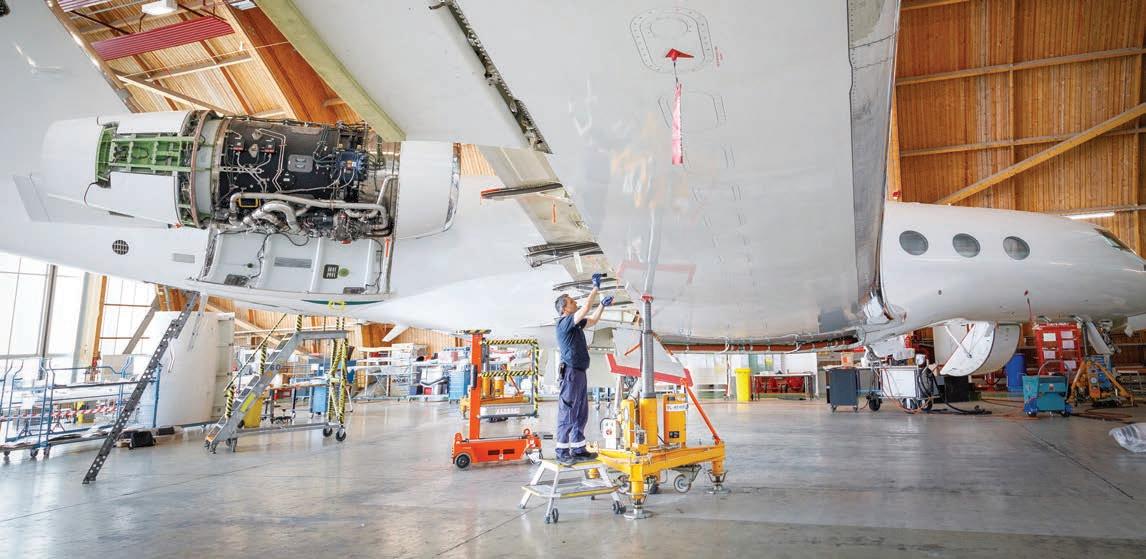 BY CURT EPSTEIN
BY CURT EPSTEIN
While the political fallout from Russia’s attack on Ukraine has had a deleterious effect on private aviation, with flights in the region down by 60-70 percent from pre-pandemic levels, it is not just aircraft operators that are being affected but service providers as well.
In a conversation at EBACE in May, David Paddock, president of Jet Aviation, noted that “less than 20” Russian-owned business jets were on its properties undergoing maintenance when the sanctions resulting from Russia’s February invasion were imposed.
“We had to immediately stop work on those airplanes,” he told AIN, adding that a completions project for one of the sanctioned Russian individuals was also halted.
“The impact on us is a mix of sanctioned
customers as well as Russian persons, and we’re restricted obviously from doing business with both of those groups. We have a few hundred Russian customers that we are not touching at all right now.”
Due to U.S. export control restrictions, the company cannot even obtain new parts for those impacted aircraft in most cases.
“For example, our sister company Gulfstream will not supply parts for Russian airplanes, either sanctioned or Russian-person controlled, so, therefore, we are not able to install any parts or touch those airplanes, not just in EU or UK or U.S. airspace, but anywhere including places like Dubai and Singapore, so the U.S. export control restriction is global,” explained Paddock. Those aircraft that were in Jet Aviation’s
hangars at the time the sanctions were imposed have been removed and parked on the apron. While some service providers may be turning a blind eye toward the challenging process required to determine the ultimate ownership of the aircraft brought to them, the General Dynamics subsidiary is taking its obligations seriously.
“What we’ve done in the past two months is work through with all of the aviation regulatory authorities with our parent company [and] with the customers,” said Paddock, adding that each case is being handled on a separate basis. The company is also relying upon guidance from its internal and external counsels, as well as compliance resources from the U.S. Commerce and State Departments.
While details of the development are still very much in the works or under wraps, Benoit Breault, Bombardier’s director of research and technology, told AIN that the blended-wing concept is “a key part of our strategic thinking.” The company’s engineering brain-trust sees the aerodynamic improvements promised by the new wing as being one of three pillars to support its ambitions to reduce business aviation’s carbon emissions. Switching to using sustainable aviation fuel and adopting new propulsion systems such as hydrogen, hybrid-electric, and all-electric power sources round out the other two pillars.
For now, Bombardier remains agnostic about what direction it might take for the propulsion system of a next-generation business jet. Breault indicated that the company is already in talks with several leading engine manufacturers about how the blended- wing architecture might accommodate next-generation propulsion systems.
“Our approach has been to think about what our portfolio of products should and could look like 30 years from now, and then backtrack to determine what technologies we need to achieve that, with a carte blanche in terms of options to be considered,” Breault explained.
His strategic technologies office is advancing a diverse portfolio of research programs, tasked with ensuring that the Canadian airframer can achieve the technology readiness levels required to progress. In concert with that, a conceptual design team is looking at what the aircraft of the future could look like.
“Some of the work is at the concept stage, but in other cases, it is in a development timeline that could lead to technology finding its way onto other [existing] aircraft programs,” Breault said. “We have to deliver technology for the short, mid, and long terms, and try to strike a balance from an investment point of view so that we are feeding the short- and medium-term objectives.”
The Bombardier team, which Breault said
has deep expertise in aerodynamics, began its work on the blended-wing concept more than a decade ago when a couple of engineers started projecting future needs and possibilities. With one eye on existing military aviation interest in blended wings, they also launched research programs with several key universities.
At this point, the company believes the work is somewhere between technology readiness levels (TRL) 3 and 4, with some initial wind-tunnel testing successfully completed and work protected under patents. A scale model, at just 7 percent of the size of Bombardier’s Global family of longrange aircraft, has been flying for the past three years in secret in Quebec.
step up work on new avenues for aerodynamic improvements. Breault said this will include novel boundary layer injection techniques to reduce drag in the tail section by slowing down the boundary layer of air along the airframe. “If we can re-energize this speed to one that matches the speed of the aircraft, we will reduce the drag in a way that is very novel for business aircraft,” he said.
Bombardier’s reasoning for taking a multifaceted approach to driving down business aviation’s carbon emissions is to do everything possible to ensure that this special mode of transportation maintains its advantages for end-users as it gets greener.
“We believe passengers will have to make some compromises to fly sustainably,” Breault told AIN. “For example, using hydrogen fuel [for direct propulsion in engines] could need enormous cryogenic tanks, but passengers probably won’t want to compromise on the size and comfort of their cabins.
What brought us to the Global 7500 were [the goals of flying] farther, faster, smoother and more connected, but we believe we can achieve both passenger comfort and social and environmental responsibility.”
The company is now building a model that will be around twice the size of the unit on display at EBACE and expects to start flying it at the same remote location in Quebec over the next six to 12 months. “This will give us greater precision in our data collection,” Breault explained, adding that the work should get Bombardier closer to its aim of achieving TRL 6. A TRL 6 technology has a fully functional prototype or representational model, while the ultimate goal is TRL 9, indicating a technology is “flight-proven.”
In this next phase of work, Bombardier also plans to further explore possible designs for future business aircraft. It will also advance its evaluation of new propulsion systems, which could include hybrid-electric and distributed electric technology.
Building on early work with the blended-wing architecture, the company will also

Part of Bombardier’s focus for work aimed at short- and mid-term applications is on the electrification of existing aircraft subsystems. For instance, it is evaluating possibilities such as using hydrogen fuel cells to replace the ram air turbines that provide emergency power in the event of an engine failure.
The company is also looking to introduce digital-twin technology that creates an exact replication of systems, using updated realtime data, and using simulation, machine learning, and artificial intelligence to support decision-making. Breault said this approach has already been adopted for health monitoring for the Global 7500 and is now set to be expanded for other Bombardier aircraft and engine data.
“It is too early to say for sure that technology like the blended wing is definitely the future [of business aircraft] but we are positive that we can mature it,” Breault concluded, while acknowledging the risks entailed. z
At last year’s EAA AirVenture show in Oshkosh, Wisconsin, ACR Electronics introduced the Bivy Stick two-way Iridium satellite messenger to the aviation community. Weighing just 100 grams and about the size of a deck of cards, the Bivy Stick doesn’t have its own display but works with a smartphone for messaging, location tracking and sharing, and viewing GPS maps and live weather forecasts. By itself (or connected to the smartphone) it can make a distress call to emergency services.
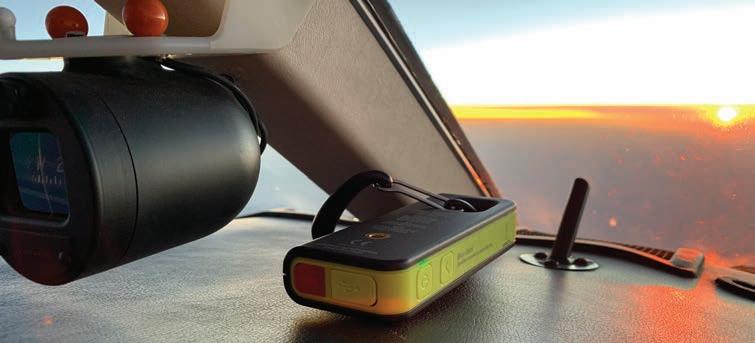
ACR purchased the Bivy company last March. “We had been watching that market for years,” said Mikele D’Arcangelo, ACR Electronics global v-p, marketing and product management. “We wanted to make sure we found the right product.”
In addition to Bivy, ACR owns companies that specialize in aviation and maritime tracking and communications and emergency products and services. These include names familiar to those in the aviation industry such as Artex, Blue Sky Network, Flight Data Systems, FreeFlight Systems, Latitude Technologies, and Skytrac.
“We got a very positive reception at Oshkosh,” D’Arcangelo said, “and we sold a bunch.” After buying the company, ACR updated the Bivy stick with new tracking intervals of two and five minutes, in addition to the existing 30 and 60 minutes. Previously the shortest interval was 10 minutes. Another feature that pilots like is the Bivy Stick’s 1/4-inch thread mount adaptor, which is compatible with many mounting systems including GoPro mounts. The Bivy Stick is also IPX7 rated for water protection, which means waterproof to a depth of one meter for up to 30
minutes. Battery life is up to 120 hours of normal operation.
The Bivy Stick sells for $199.95 with a required minimum four-month subscription to a plus or unlimited data plan. Plans range from Basic at $19.99 monthly or $14.99 with an annual subscription plan to Plus at $34.99 ($29.99 annual plan) and Unlimited at $49.99 ($44.99 annual plan). Each plan includes a specific number of credits for tracking, messages, and weather reports. All plans include unlimited sending of “check-in” messages; these are pre-written stored messages that the user can send at any time. Also included is emergency SOS messaging via Global Rescue. Plans can be deactivated at any time and reactivated with no fee.
Without a smartphone connected to the Bivy Stick, it can still be used to send check-in messages and SOS alerts, using buttons on the device. Global Rescue will respond to SOS messages and contact local emergency services for the subscriber. ACR also offers higher-level services through Global Rescue, including medical evacuation and
consultation as well as security services, for additional fees.
I tested the Bivy stick while hiking and in the air, and it consistently worked well, connecting seamlessly with both GPS and Iridium satellites. Using the Bivy app on my iPhone, I was able to send and receive messages reliably. I did the airborne testing in light airplanes and in a CitationJet at FL410 and never had any problems communicating and also tracking my journey.
Typing messages in the app is simple, and as long as there is Bluetooth between the smartphone (iOS or Android) and the Bivy Stick and a clear view of the sky, the message should go through.
The Bivy Stick is light and easy to keep in a pocket of my backpack while traveling. And the ability to send a quick message to my family while flying in an airplane without air-to-ground or satcom service is a bonus. The included maps are also a handy feature for outdoor activities. z
Rogerson Kratos subsidiary Top Drop is offering a customized aerial firefighting solution using repurposed surplus U.S. Army Sikorsky Black Hawk helicopters. Repurposing the UH-60A and L model Black Hawks can cut acquisition costs by up to two-thirds as opposed to purchasing comparable new equipment, CEO Michael Rogerson told AIN . Rogerson thinks the idea of serving communities directly will become popular as more towns take aerial firefighting into their own hands and the fire danger becomes more acute. Like now, for instance.

This year is shaping up to be one of the worst U.S. wildfire seasons on record. By early June, nearly two million acres had already burned, nearly triple the amount at that time last year. In New Mexico alone, five fires cumulatively had torched 660,000 acres. Fire-prone California recorded 30 wildfires during the first five months of the year, including the 600-acre Old Fire blaze that popped up on Memorial Day near Napa Valley’s wine country.
The past firefighting doctrine of “let it burn” is increasingly being displaced by one of rapid response. In California, the Department of Forestry and Fire Protection, better known as Cal Fire, emphasizes the need to quench fires in the crib during the first 10 acres of an outbreak. In the main, this strategy is successful 95 percent of the time, according to the agency. The other 5 percent is the problem.
In Napa, the populace and numerous wineries are still recovering from 2020’s Glass Fire, which raged on uncontained for 23 days, incinerating more than 67,000 acres in September and October, laying
For today’s demandin operations, reliable maintenance, repair and overhaul services are essential to keep your feet fyin sa ely and e fciently. Leonardo Helicopters’ lobal MRO network uarantees rapid access to specialist support when it’s needed most. Leonardo’s rowin capillary network o more than 90 service centres around the world is backed by an expert team o over 100 technical representatives o erin continuous support to civil and military customers. Which means that whatever your challen e, help is always close at hand. Driven by passion to help you achieve mission success, Leonardo’s lobal support network is always there or you. Visit us at FIA, Pavilion B010
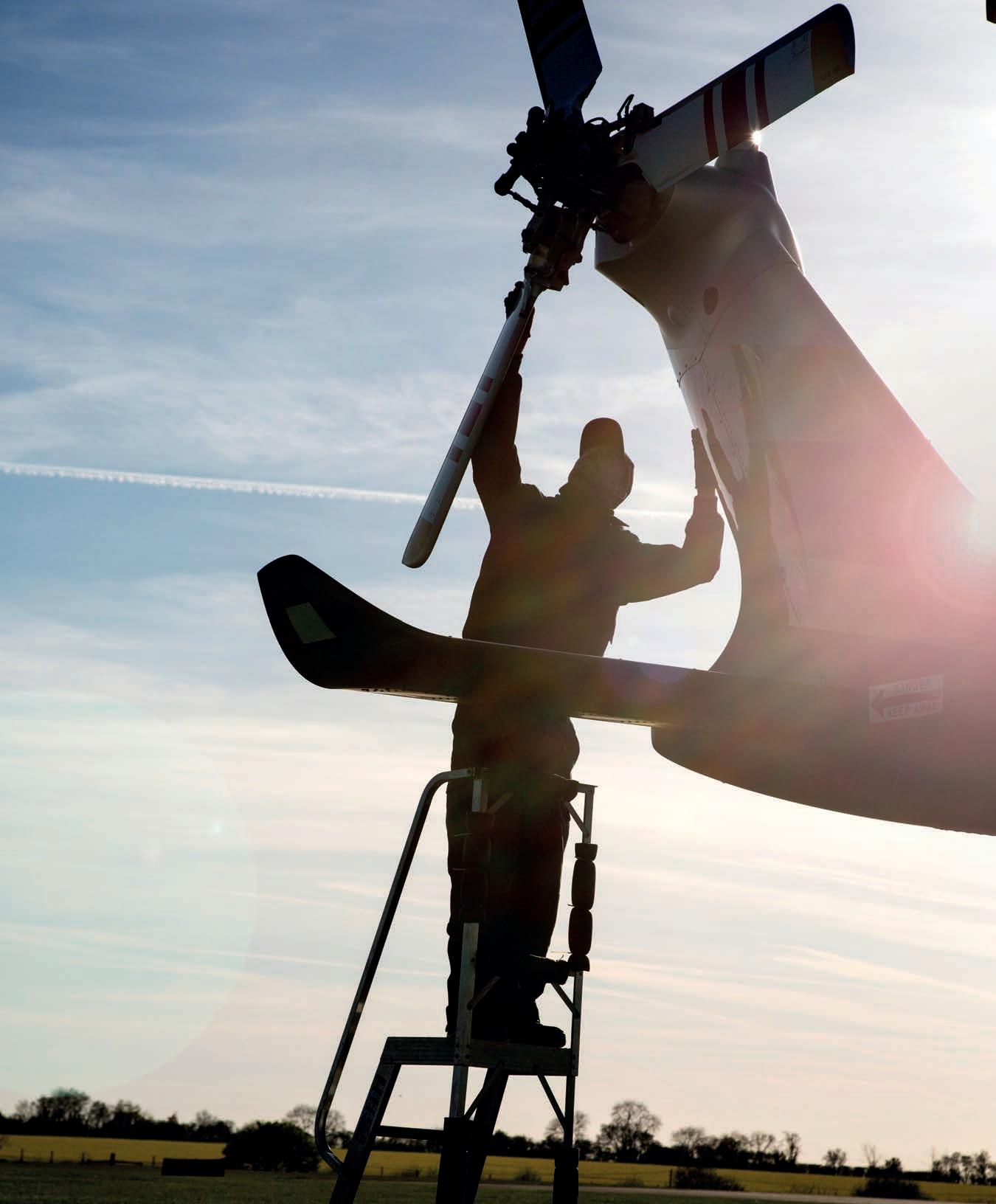
waste to 642 homes, nearly 2,000 other structures, and damaging or destroying dozens of wineries, restaurants, and inns.
Although Cal Fire maintains its own fleet of firefighting fixed-wing aircraft and helicopters, including a fleet scheduled to grow to a dozen new Sikorsky S-70i Firehawks, increasingly fire-susceptible communities are taking matters into their own hands. The Los Angeles County Fire Department operates seven Firehawks. In San Diego, both the Sheriff Department and the local utility, SDG&E, operate a collective fleet of medium Bell twins, an Erickson Air-Crane, and a Sikorsky Firehawk. Santa Barbara County also operates the Firehawk.
The Firehawk is a capable, albeit pricey, solution to get water and retardants on a fire in a hurry. Its quick-fill belly tank can hold up to 1,000 gallons and it can be kitted with a variety of mission-complementary technology including a rescue hoist, external cargo hook, searchlights, and tactical communications and navigation systems. It can also be equipped with forward-looking infrared (FLIR) cameras and night vision goggles, giving it true around-the-clock capability. With a full load, the Firehawk can race to a fire at speeds up to 140 knots.
But all this capability comes with a price that can run near $30 million per aircraft when adding custom avionics installation and spares, putting the aircraft out of reach of all but the largest and most affluent state and local governments. In Southern California’s Orange County, the local government has contracted with Coulson Aviation for use of the company’s firefighting tandem rotor CH-47s. “Those helicopters had previously been on contracts in Northern California, but Orange County was willing to pay earlier to ensure those helicopters were available for the fire season,” Rogerson said.
In Napa, where the fire danger is well understood, last year from August to
November the county spent $1.86 million to contract for the exclusive services of a used Black Hawk kitted with a 900-gallon water bucket from operator Blue Sky Helicopters. While Cal Fire had agreed to base a contracted helicopter nearby, it was not there on an exclusive-use basis and the agency in fact withdrew it for use on fires elsewhere in the state. For Napa, still dealing with the charred remains from the Glass Fire conflagration, this presented an unacceptable risk.
own helicopters. Our interest is either one. We can support leases or sell them helicopters for significantly less than new by taking U.S. BEST [Black Hawk Exchange Sales Program for the sale of surplus U.S. Army UH-60As], modernizing their avionics, and installing the best firefighting solution for that particular municipality,” Rogerson said. Top Drop is currently running a leasing program from McClellan Airport in Sacramento, which, not coincidentally, is the headquarters for Cal Fire’s aviation operations.
“We want to stay close to the customer and have the ability to communicate well. That location also allows us to dispatch quickly to areas that traditionally have had large fires in the past,” he said. Top Drop is entertaining exclusive-use customer leases that will enable helicopters to respond to fires within 10-15 minutes of a call-out. “You have to be really close to it [the fire] and have a fast helicopter like the Black Hawk.”
Napa is the type of community Rogerson has in mind for his company’s conversion. Rogerson has initially acquired four Army surplus UH-60As and already converted two to the firefighting configuration, which, he says, has a typical out-the-door price of between $8 to $10 million—helicopter included—depending on the equipment selected. The cost of the conversion itself to a customer-provided helicopter could range between $1 million and $2 million. “Repurposing UH-60As not only saves on acquisition costs but also on support and maintenance costs,” Rogerson said.
As in Napa, not all local governments are willing to acquire their own helicopters—yet. “I think they are going to do it in stages,” Rogerson said. “They will lease or rent helicopters for the fire season. Other states are doing this. They start with a lease and when they see the difficulties of an exclusive use [agreement], they tend to move toward acquiring their
The Top Drop equipment suite provides upgraded navigation, surveillance, and sensor systems that enable night-time aerial firefighting operations. The package not only supports day/night operations but also delivers “the best accuracy while replenishing drops with a hover snorkel for the fastest return on the fire. The accuracy
of our drops matches the additional
I think they are going to do it in stages. They will lease or rent helicopters for the fire season. Other states are doing this. They start with a lease and when they see the di culties of an exclusive use [agreement], they tend to move toward acquiring their own helicopters. Our interest is either one…
Seconds count when lives are on the line. It’s why every feature of the Airbus H145 has been designed for safe, effective, and fast operations. With easy patient loading, state-of-the-art avionics to reduce pilot workload and a safer working area on the ground, the H145 ensures people get the medical care they need as fast as possible. All of this has made the H145 one of the emergency medical services market leaders around the globe – helping people every single day and making sure the world remains a beautiful place.
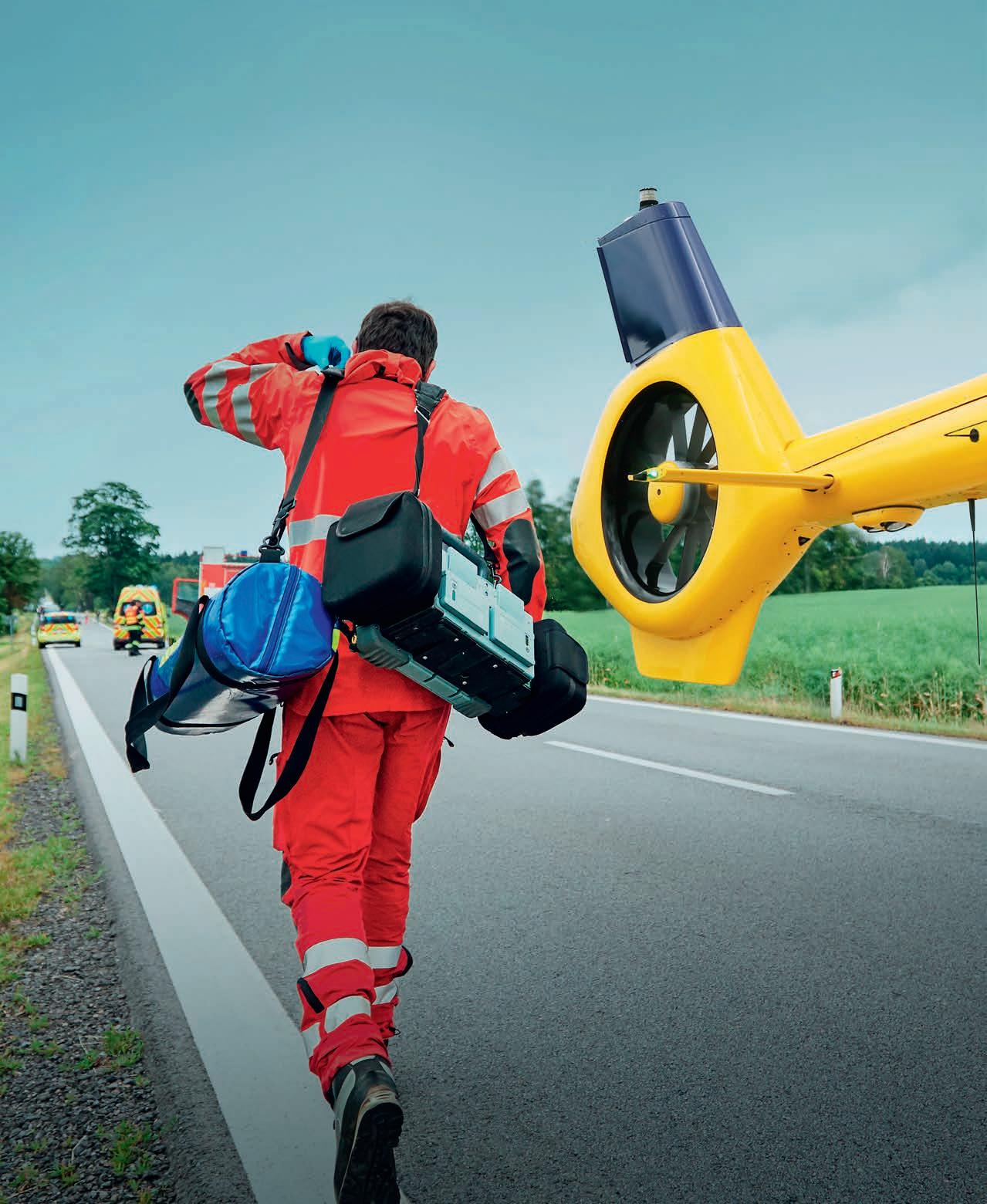
capacity, and the verification of features ensures the best results,” according to Rogerson.
It features a digital cockpit, a quick-fill internal water tank, and high-definition cameras. The avionics suite includes digital displays, moving map, flight-following satcom, enhanced navigation, dual commercial radios, ADS-B, loud hailer, digital audio system, telemetry unit, integrated FMS, and integrated maintenance system.
According to Top Drop, the integrated avionics suite replaces analog equipment and can include advanced GPS, a traffic collision avoidance system, terrain awareness and warning system, as well as forward- looking infrared. The snorkel refills the tank in 60 seconds, and the firefighting tank system has an automatic foam dispenser and integrated control functions.
Rogerson said the available internal, roll-on, roll-off 850-gallon water/retardant tank saves significant weight and cost and provides an additional level of safety for night-time operations as there is “nothing dangling below the helicopter. You really can’t go flying around neighborhoods at
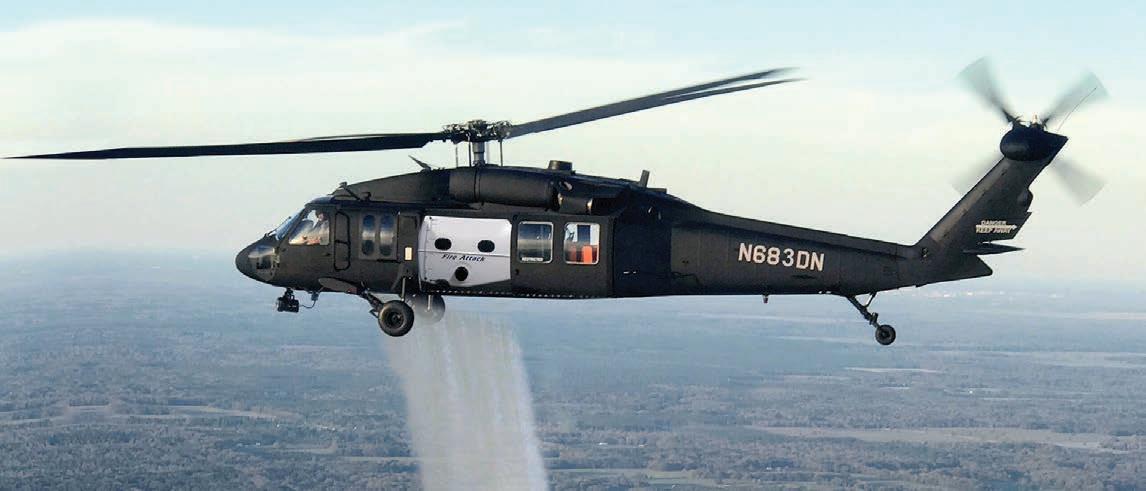
night with this line dangling down to a bucket, nobody wants that.” Customers can also opt for the lower-priced option: a slingloaded water bucket. Switching over from the bucket to the internal tank can take less than a week. “There are choices and they are cost-driven. Municipalities, especially in California, are very cost-sensitive to the equipment,” Rogerson said. “I don’t think we’re at the perfect solution, yet. We’ve got to be cost-conscious to the market.”
The conversion is made via FAA form 337, and Top Drop is targeting a 90-day turnaround from order to delivery, while the installation takes approximately 22 days. The conversion works with any avionics installation, although the company recommends panel modernization to reduce pilot workload. The missionspecific avionics works with either the bucket or internal tank. Top Drop provides a complete turnkey system including full documentation, field support, logistics, and certification. “If you deploy to the customer or out in the field, that’s a different level of support,” Rogerson said. “We provide the pilots, mechanics, and support personnel.”
For customers who purchase aircraft, Rogerson counsels that it will “take time to absorb them in terms of training issues for the aircraft and the different types of firefighting” in which the operator engages. He said pilot training would be a “cooperative effort” beginning with type rating on the aircraft and established training companies such as FlightSafety. “We integrate our training into the other training programs that are out there. It’s very efficient for the operator.”
Rogerson said the “rapid response” firefighting doctrine provides the impetus for wider use of the Black Hawk platforms on fires. “It really is the critical part of it, getting there before the fire really gets going and being able to hit the fire exactly where you want to.” He said offering the system with a bucket and not just the internal tank “preserves a multi-mission capability. Our solution is adaptable to those different approaches. There’s more than one way to skin a cat. We use different technologies for different needs. The types of [water] delivery are very important but so are the accuracy and speed at which the helicopter can drop and refill. The technology is the thing.” z
Discover the business solution at: bell.co/corporate

“I’ve been fying helicopters and fxed wing for over 30 years. When comparing light twins, the [Bell] 429 beats the competition hands down for speed, space, eficiency and simplicity.“- Captain, Corporate Flight Department, Houston, Texas

Signature Flight Support has opened its new FBO facility at the UK’s Birmingham Airport. The structure replaces the previous 1930’s-era terminal that was damaged by flooding in 2018.
The world’s largest private aviation service provider, Signature had been operating from a temporary facility until the opening of the new building. Construction took three months plus an additional month of interior finishing. The 2,400-sq-ft facility features a passenger lounge, refreshment bar, in-house security screening, pilot lounge, and electric vehicle charging station.
“The newly-built FBO in Birmingham reflects the resilience of our team and the importance of this location within our EMEA network,” said Daniel Myles, the company’s area director for the UK. “General aviation continues to be a commercial driver to both the airport and Birmingham city, and we look forward to greeting attendees of the upcoming Commonwealth Games and Women’s UEFA Football Championship this summer.”
FBO operator Modern Aviation will expand its network with the purchase of California-based Superior Aviation Company’s (SACJet) trio of Sacramento-area facilities. Included in the deal—which is subject to regulatory approval and is expected to close by the third quarter—are the Capital Jet Center at Sacramento International Airport, Mather Jet Center at Mather Airport, and Executive Jet Center at Sacramento Executive Airport. Each are the lone service provider at their respective airports. Modern will retain all of the operational employees at the three locations.
“As the capital of California, Sacramento is a highly attractive, growing general aviation market, and these FBOs provide world-class service to a wide range of customers,”
said Modern CEO Mark Carmen, who added that his company’s goal is to develop a national FBO network. “The opportunity to acquire SACJet’s three Sacramento FBOs and build upon their reputation for client service is another important milestone in executing our strategy.”
Modern Aviation, which was founded in 2018, announced in October that it was acquiring Sheltair’s five New York-area FBOs. When completed, this latest transaction will give the rapidly growing FBO chain its first foothold in the Golden State and bring its total number of facilities to 12 from coast-to-coast.
APP Jet Center has acquired the former Atlantic Aviation FBO at Witham Field (KSUA) in Stuart, Florida after the latter was required to divest it as part of the regulatory approval process for its merger with Ross Aviation.

Last August, Ross acquired the long-standing Stuart Jet Center, and then in November, it agreed to a merger with Atlantic Aviation. With the 25 Ross Aviation FBOs currently in the process of being rebranded as Atlantic Aviation locations, Atlantic was required to sell its FBO on the southwest side of the airport, while retaining the Ross Aviation FBO location that is located there.
For APP, this represents its fifth location nationwide. At KSUA it acquired 110,000 sq ft of hangar capacity, and a recently renovated 8,000-sq-ft terminal, including a conference room, pilots lounge, flight planning center, and refreshment bar. The former Atlantic staff will remain in place.
“We are delighted to be integrating Stuart into APP’s growing network of FBO locations,” said CEO Dan Harrow, adding the company has been operating along Florida’s Treasure Coast for many years and has firsthand knowledge of the growth of general aviation in South Florida.
When Star Wars debuted in 1977, few could have imagined that 45 years later it would be more popular than ever, having inspired five sequels, three prequels, two standalone movies, several animated and liveaction series, countless video games, books, toys, and one FBO.
Northgate Aviation Chico Jet Center, the lone service provider at California’s Chico Municipal Airport (KCIC), has been familyowned for the past 17 years. After Alicia Rock’s father became unable to continue managing the day-to-day operations of the facility eight years ago due to health issues, she left her law career and stepped in as COO and general counsel. Quickly bitten by the aviation bug, Rock overhauled the FBO and also decided to imprint her love of the science-fiction epic on the facility, dressing it up with large murals, a huge inflatable Millenium Falcon hanging in the lobby, statues of stormtroopers, and her collection of Star Wars memorabilia displayed in glass cases.
Customers regularly send her care packages containing Star Wars items they picked up in their travels. “Everybody that has come in, even if they’re not Star Wars fans, find it super delightful,” Rock told AIN
While Rock was unhappy with how a mural turned out in the men’s restroom depicting Han Solo, one of the heroes of the series, that displeasure turned to acute embarrassment the day Han Solo himself, actor and pilot Harrison Ford, landed unannounced in his helicopter. After exiting the facility, a bemused Ford informed Rock that while he loved the Star Wars theme, the Han Solo image looked nothing like him. She quickly brought the artist back to fix it to a more representative likeness.
At KCIC the FBO occupies a vintage 26,000-sq-ft hangar complete with an elaborate truss system holding up the roof. The
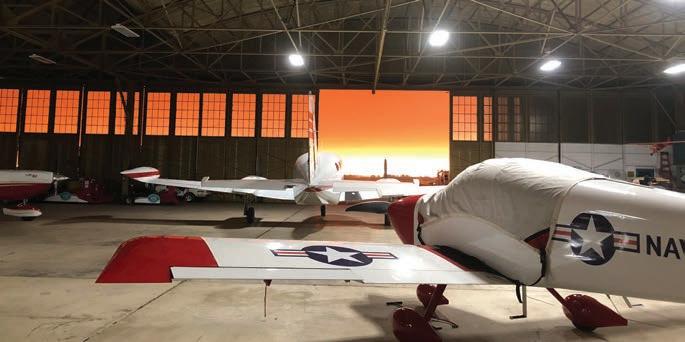
Camp
terminal part of the hangar occupies 1,700 sq ft and includes a 20-seat a/v-equipped conference room, a passenger lounge, pilot lounge, and crew cars.
While the FBO sees its share of business aviation tra c, the airport serves another crucial role as one of Cal Fire’s 13 bases scattered around the state and one of only three in Northern California that can handle the larger Type 1 fire bombers. Supporting that activity bolsters the Titan Fuelsbranded FBO’s volumes, which with last year’s wildfires, totaled nearly 750,000 gallons. “It’s a little bit di erent to be an FBO at a firebase,” Rock said.
There is perhaps no one who understands the vital nature of that operation better than Rock, who recalled seeing the start of California’s infamous Camp Fire as a plume of smoke in the distance from her Butte County home in the early morning of Nov. 8, 2018. Knowing the dry conditions made it a harbinger of heavy activity at the airport, she quickly made some calls to order extra aviation fuel loads, ensuring that the FBO’s three 12,000-gallon jet fuel tanks were full along with its three 5,000- gallon refuelers. Soon ash began to fall, and she
marshaled her family and dogs and led a convoy of vehicles out of the immediate danger zone to a friend’s house. She then headed to the FBO, stopping first at a supermarket along the way to stock up on ready-made meals to feed the busy fire crews. Soon the fire shifted, forcing her to go retrieve her family, dogs, and a horse and bring them to the FBO.
That evening Rock received word that her home had burned to the ground in what was to become the deadliest and costliest fire in state history. With more than 33,000 people displaced by the fire and nearly 20,000 homes destroyed, hotel rooms were unavailable in the area, so her family lived in the FBO terminal for the next two and a half weeks, as pilots and crews slept anywhere they could. That period included Thanksgiving, and with scores of crews from state agencies and the National Guard still living out of tents at the airport, Rock was approached by their leadership asking if they could hold a holiday dinner at the FBO. She readily agreed and helped set up the meal for nearly 300 people, all falling under what Rock described simply as customer service. C.E.
repair capabilities for blades, vanes, and other cold section component services to our portfolio,” said StandardAero chairman and CEO Russell Ford. “This acquisition marks another strategic initiative to continue to expand our worldwide portfolio of MRO and component repair services.”
Signature TechnicAir’s Bournemouth, UK heavy maintenance facility has been named a Honda Aircraft-authorized service center and as such will support HondaJet customers in western Europe. The authorization means factory-trained and certified technicians using the latest tools and technology will provide base maintenance for HondaJets under all EASA and UK Civil Aviation Authority regulations and OEM specifications. Further, Signature TechnicAir also has received certification as a GE Honda Aero Engines authorized service provider, which enables the MRO’s technicians to service the GE Honda Aero Engines HF120 turbofans that power the HondaJet. Additional support for HondaJet customers in the UK, including AOG, is available through Signature TechnicAir’s line maintenance and mobile service units based at London Luton, Farnborough, London Biggin Hill, and Manchester airports.
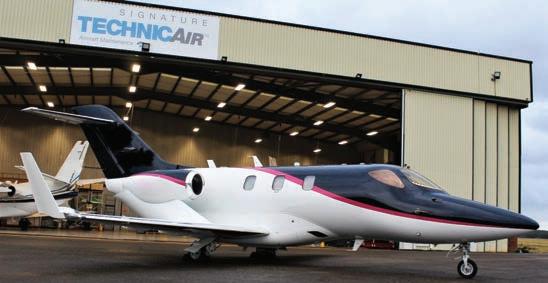
StandardAero has signed an agreement to acquire EB Airfoils, a Palm City, Florida-based aircraft engine fan blade, compressor blade, and vane MRO provider. Operating from two facilities encompassing nearly 20,000 sq ft and with 50 employees, EB Airfoils is one of a few companies in the world that has been granted OEM source approval or source demonstration for the repair and overhaul of those turbine engine components. The privately held company’s portfolio of source approvals spans Pratt & Whitney, GE Aviation, CFM International, and International Aero Engines platforms. EB Airfoils is in the process of receiving additional approvals through source demonstrations.
“EB Airfoils expands StandardAero’s existing airfoil capabilities at our Cork, Kansas City, and Singapore facilities to provide a more comprehensive offering of hot and cold section airfoils with immediate growth for our component
GE Aviation has extended its agreement with MRO and service provider Aero-Dienst to support the CF34 turbofan engine that powers the Bombardier Challenger 600 series as part of the OEM's authorized service center network. The German company became one of the first authorized service providers in GE’s European business/general aviation network in 2011.
Aero-Dienst performs maintenance on around 600 Challenger 600s every year and offers AOG and mobile repair team services. It also performs engine work, including removal and reinstallation of components as part of the GE OnPoint program. The company maintains a stock of original GE spare parts at its main base at Nuremberg, Germany.
Gulfstream Aerospace is expanding completions operations at its St. Louis Downtown Airport facility to increase cabinetry and exterior paint production of its large-cabin twinjets. The expansion will include the hiring of 140 additional cabinetmakers and finishers, upholsterers, aircraft painters, manufacturing and operations engineers, and certification inspectors, as well as additional support positions. The Savannah, Georgia-based airframer opened the St. Louis Service Center in 2017, and it spans 11 hangars with more than 637,457 sq ft of shop and support space. It can service large-cabin and midsize aircraft with U.S. or European registration under its FAA and EASA Part 145 certificates.

As Bevan Aviation approaches seven decades in business, owner Kent McIntyre is working to bring more work in-house to the avionics repair and installation and aircraft maintenance provider at Wichita Eisenhower National Airport. The 25-employee FAA Part 145 repair station recently added metal cutting and powder coating to its capabilities, which McIntyre told AIN allows Bevan to manufacture custom instrument panels instead of shipping that work o to contractors. “We’ve been fortunate to hire people with new talents and that’s helped us out a lot,” he said.
Based out of two, 10,000-sq-ft hangars and 2,200 sq ft of office space, avionics installation is the biggest part of Bevan’s business. It is a Garmin dealer, which McIntyre said is Bevan’s biggest vendor. Additionally, the company o ers ship-in, ship-out avionics repair, and airframe and engine maintenance on piston airplanes, turboprops, and business jets.
“The ship-in, ship-out repair has changed some because a lot of what we used to work on isn’t out there,” he said. “It looks to us like a lot of the small shops that used to do that work are no longer doing it. We see that business picking up a little bit, but I think it will decline in 10 years.”
The company was started in 1954 by Ralph Bevan. Bevan had another company, Rabell Electronics (a combination of Ralph’s first name and that of his wife, Isabell) that he eventually merged with Bevan, and for years it was known as Bevan-Rabell. It was about four years ago that McIntyre changed the name of the company to Bevan Aviation to reflect its growing turbine airplane work.
McIntyre came to Bevan in 1989 to run its installation shop and do some sales. “I was at Airplane Services in Wellington [Kansas] and kind of helped them get their
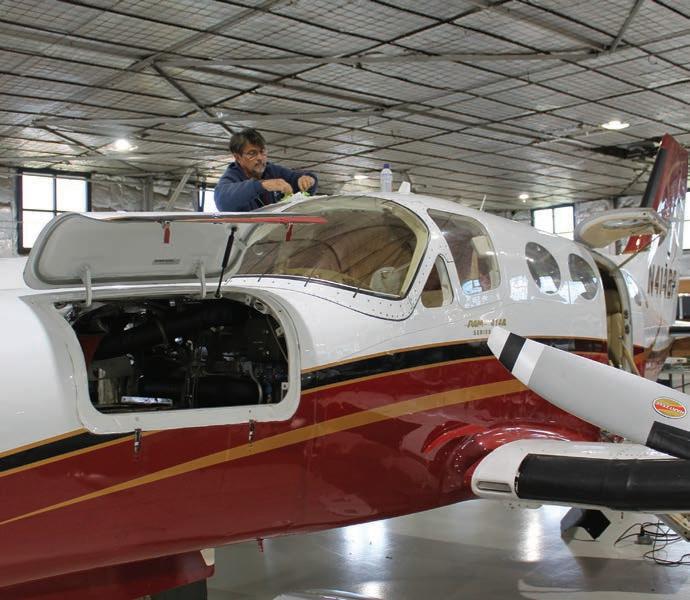
STC program started and going,” he said. “At some point I just decided it wasn’t my dream anymore. I knew the owner here, Bob Patterson, and we talked it over and he made me an o er and I came up here.”
After 14 years, McIntyre bought the company in 2003 from Patterson, who was retiring. “I’d always hoped that would be an opportunity,” he added.
McIntyre got into the aviation business by working line service at the airport in Wellington while learning to fly. His interest was stirred by his uncle, who was a pilot in World War II and later would rent airplanes to fly, taking McIntyre with him. “I always tell everybody I fell off the hay wagon by the airport and never found my way home.”
During McIntyre’s tenure as owner Bevan has seen “steady, not huge growth” and will
continue to do so. “I think at this point we’re perfecting our art more and more, all the time,” he added.
Bevan’s biggest challenge is the supply chain. So far, the company has been able to work around the issue most of this year by carrying more inventory than it typically would. “You kind of throw a dart in the morning and see what you’re going to order for that day and hope you get it within the next five or six months,” McIntyre said. “Not every vendor has that problem but the majority of them do. Just-in-time inventory was great until it wasn’t.” J.S.
Cessna 208B, April 13, 2022, Heyburn, Idaho
The 30-year-old pilot of a FedEx feeder Cessna Caravan was killed when the aircraft struck one of six smokestacks on the roof of a potato processing plant while on final approach to Runway 20 at Burley Municipal Airport in Idaho. The flight was arriving from Salt Lake City on an instrument flight plan. Prevailing weather included one mile visibility in light snow and mist, a two-degree temperaturedewpoint spread, broken clouds at 2,300 feet agl, and a 2,800-foot overcast.
The accident occurred during the pilot’s second RNAV approach to Burley’s Runway 20, after having flown the missed approach following the first attempt. After she reported passing the initial approach fix, air traffic control cleared her to change to the local advisory frequency. A witness a quarter mile away saw the Caravan break out of the clouds, then almost immediately enter a plume of steam from the plant’s stacks. Security camera footage showed it descending in a wings-level, nose-high attitude until it struck a smokestack reinforced by a steel framework and fell onto the roof. First responders subsequently recovered about 40 gallons of spilled jet fuel.
Press reports indicate that other aviators, including the pilot’s father, have frequently complained that the smokestacks pose an unreasonable hazard to arriving aircraft and called for either the plant’s closure or relocation of the airport.
Bell 407, May 11, 2022, Livermore, California
The pilot and a lineman undergoing training survived with injuries after a contractor’s helicopter went down on the grounds of Pacific Gas and Electric’s Livermore Electric Safety Academy. The pilot had to be extricated from the wreckage and taken to a trauma center. The lineman, who’d been tethered to the aircraft’s exterior, was hospitalized as a precaution but was walking under his own power immediately afterwards. No property damage to the facility was reported.
The 35-acre facility adjacent to the Lawrence Livermore National Laboratory contains a gravel lot the size of 10 football fields and numerous 40-foot poles. Linemen practice hoisting on and off the poles from helicopters as well as climbing them from the ground. The aircraft reportedly came to rest in a parking lot east of a helipad. Further details have not been released.
Pilatus PC-12, Nov. 30, 2019, Chamberlain, South Dakota
Although the pilot was unable to clear snow from the horizontal stabilizer before taking off into low IMC, the NTSB concluded that the single-engine turboprop’s crash three-quarters of a mile from its departure airport resulted from the combination of a center of gravity aft of limits and the pilot’s
abruptly pulling the nose up to a steep angle during the takeoff roll. He and eight passengers were killed and three more passengers suffered serious injuries when the airplane stalled into a dormant cornfield barely one minute after liftoff.
The airplane arrived at 09:27 the previous morning and remained on the ramp overnight. The pilot and passengers stayed at a nearby lodge. On the morning of the accident, the pilot and one passenger bought isopropyl alcohol at a hardware store while the others went hunting. According to a representative of the lodge, the two spent three hours clearing accumulated ice and snow, but were unable to reach the horizontal stabilizer with the available seven-foot ladder. The pilot said they needed to get home, the airplane was “98 percent good,” and the accumulation on the tail would fall off during takeoff. The lodge representative recalled heavy snow at the time.
Data recovered from its lightweight data recorder (LDR) showed that the Pilatus entered a left turn immediately after liftoff; the stall warning and stick shaker activated one second later. The left bank reached 64 degrees at its peak altitude of 380 feet as its airspeed decayed to 80 knots. NTSB weightand-balance calculations estimated that it was loaded 107 pounds above its maximum gross weight with a center of gravity 3.99 to 5.49 inches aft of limits. Twelve people were aboard the 10-seat airplane. LDR data from previous flights suggested that the accident pilot tended to rotate abruptly, with a heavy pull on the controls. Performance studies indicated that the pitch and airspeed oscillations after takeoff were pilot-induced and control authority should have been adequate until the moment of the stall.
Piper PA-31T, Dec. 28, 2019, Lafayette, Louisiana
ADS-B track data led the NTSB to conclude that the pilot succumbed to spatial disorientation shortly after taking off into a 200-foot overcast layer. He and four of his five passengers were killed when the twin-engine turboprop crashed onto a road and slid across a parking lot less than two and a half minutes after takeoff; the fifth passenger and the occupant of a car the airplane struck were seriously hurt, and two people in the adjacent building suffered minor injuries from broken glass. The flight was operating on an instrument clearance from Lafayette Regional Airport to Dekalb-Peachtree Airport outside Atlanta. Prevailing weather included five-knot southeast winds and visibility of three-quarters of a mile with 200 feet vertical visibility.
The pilot was cleared to take off from Runway 22 at 9:18:26 with instructions to climb to 2,000 feet on a heading of 240 degrees. The airplane began a slight right turn, then gradually began rolling left as it climbed through 474 feet. Passing through 700 feet, the pilot read back instructions to turn right to 330 degrees and climb to 10,000 feet; no further transmissions were received. The Cheyenne reached its peak altitude of 925 feet at 9:20:40 while banked 35 degrees left, then began descending. At 9:20:57, it descended through 320 feet at a rate of 2,500 feet per minute in a 75-degree left bank.
The 1,531-hour private pilot held an instrument rating, but his logbooks were not recovered and his currency for flight in instrument conditions could not be established. His most recent recurrent training had been conducted in the accident airplane in April 2019 with a pilot whose instructor certificate had expired two months earlier. That flight did not include flight in either actual or simulated instrument conditions.
Airbus Helicopters AS350B, March 7, 2021, Touques, Calvados, France
The pilot and only passenger were killed and the aircraft destroyed when its main rotor blades struck tree branches during an attempted confined-area takeoff. The helicopter had arrived at the private property the previous evening, approaching over lower growth to land in a grassy area facing 23-meter (75-foot) trees. It touched down on the flattest portion of the landing zone, parts of which were steeply sloped.
Takeoff took place at 17:43; the tree branches facing the helicopter were in the shade. A witness saw it climb vertically without backing up, then decrease its pitch attitude before the main rotor blades struck the branches of an ash tree at a height of roughly 19 meters (62 feet). The resulting torque reaction severed the tail boom from the fuselage, which fell to the ground in a spin, and also wrenched the two front seats from their attachment points. The flight lasted just 11 seconds.
The 74-year-old pilot held an airline transport pilot certificate with type ratings for four Airbus transport-category jets and commercial privileges for helicopter rated for the AS350, EC130, and Robinson R22 and R44. He also held a helicopter flight instructor certificate issued on Aug. 9, 2020 and a Class 1 medical certificate requiring use of corrective lenses. His pilot logbook was not found, but BEA investigators’ analysis of the helicopter logbooks concluded that he’d logged about 1,400 hours in helicopters including 100 in the AS350. His approval to use off-airport landing sites was valid through June 25, 2021. The 1981-model helicopter had logged 8,011.52 total hours.
Canadair CL-600-2B16 Challenger 601-3A, May 5, 2019, 139 nm northwest of Monclova, Mexico
Severe turbulence encountered inside a thunderstorm cell caused the crew to lose
control of the aircraft at FL410, entering an inverted flat spin and flaming out both engines. The two pilots and 11 passengers perished when the U.S.-registered corporate jet crashed into remote desert terrain at an elevation of 1,088 meters (3,570 feet).
The flight departed Las Vegas-McCarran International Airport at 21:52 UTC (14:52 local time) on an instrument flight plan to Monterrey, Mexico at a cruising altitude of FL370. After crossing the border, the crew contacted the Monterrey Air Control Center at 23:24 UTC, requesting a climb to FL390, which was approved. Nine minutes later the airplane entered the outer area of the storm and experienced increasing turbulence, with vertical accelerations between 0.68 and 1.40 g. The pilots then requested a climb to the airplane’s maximum certified operating altitude of FL410. This was also approved.
Archived weather radar data showed that the Challenger entered the core of the storm at 23:37:00 UTC, just when the flight data recorder logged sharply increasing turbulence and bank angles in either direction rolling through 18 degrees. Eighteen seconds later, “a massive disturbance in the air mass” imposed a downward acceleration of -1.98 g, quickly followed by +2.40 g in upward acceleration. Within three seconds, g-forces switched from -1.88 to +2.74, and within four more seconds, the airplane rolled 90 degrees to the right as it continued climbing to FL425. The Challenger reached its peak altitude of FL448 inverted, banked 60 degrees nose down, before briefly rolling wings level and then going inverted again. Spectral signatures identified on the cockpit voice recorder suggested that both engines shut down during the initial upset. z Your source for aviation news!
www.ainonline.com
This advance notice of proposed amendment (A-NPA) provides initial concepts for the development of environmental protection requirements for the new generation of supersonic transports (SST) being developed for business jet and airline applications. These aircraft are expected to become operational in the late 2020s. The objective of the rulemaking is to ensure that landing and takeo noise limits correspond to existing requirements for subsonic jet airplanes. Requirements for CO2 limits for SSTs are also being proposed. Comments on the A-NPA are due July 25, 2022.
Aug. 8, 2022
This Notice of Proposed Amendment (NPA) from EASA addresses the evolving technological, procedural, and operational aspects of remote airport air traffic services (ATS), with the aim of facilitating its safe and uniform implementation by EASA member states and promoting the development and deployment of new digital technologies. Remote provision of air tra ffi c services, referred to as digital towers, enables ATS from airports where direct visual observation is not available. Instead, the view of the entire airport is through digital technology. Comments on the NPA are due Aug. 8, 2022.
Aug. 11, 2022
An EASA notice of proposed amendment is intended to improve the ability to integrate the use of vibration health monitoring (VHM) systems for the rotor and rotor drive components in Part 29 large helicopters. Current acceptable means of compliance requirements are not sufficient to ensure that VHM systems can be used to optimize alerts when maintenance is required on those components. Comments are due by Aug. 11, 2022.
Sept. 16, 2022 and Sept. 16, 2023
New FAR Part 89 requires that after Sept. 16, 2022, no unmanned aircraft system can be produced without FAA-approved remote ID capability. After Sept. 16, 2023, no unmanned aircraft can be operated unless it is equipped with remote ID capability as described in new Part 89 or is transmitting ADS-B Out under Part 91.
Sept. 30, 2022
Scheduled to start at the end of September, new passenger reporting requirements by the European Union Aviation Safety Agency apply to entry into European Union countries of non-EASA charter flights and professional-piloted Part 91 operations. The requirements do not apply to individuals who own and pilot their own aircraft into the EU.
Oct. 31, 2022
The European Union Aviation Safety Agency has published rules that permit operators to reduce the amount of contingency fuel normally required to be carried, thereby reducing the CO₂ emissions and the overall environmental impact of the flight. While the rules recognize that extra fuel needs to be carried to account for unexpected situations
that delay or prevent landing at the original destination, EASA says that “The amount of additional fuel required can be optimized, while continuing to ensure high safety levels, due to improved risk assessment, calculations based on better data, and better decision making.” The new rules are scheduled to go into effect on Oct. 31, 2022.
Nov. 13, 2022
Revised Australian airport certification regulations (CASR Part 139) and an accompanying revised manual of standards (MOS) went into effect on Aug. 13, 2021. Under a transition period, operators of certified airports have until Nov. 13, 2022 to fully comply with the requirements and MOS publications.
Dec. 12, 2022
Revisions to duty time and rest regulations for Canadian-registered commuter and air taxi operators of turbine and non-turbine aircraft (CAR Parts 704 and 703) go into effect on Dec. 12, 2022. Transport Canada said the changes include: prescribed flight and duty time limits that respect modern scientific research and international standards to limit the amount of time a crewmember can be on the job, and fatigue risk-management systems that will require operators to demonstrate that any variance to the prescribed flight and duty time
limits will not adversely affect the level of flight crew fatigue or alertness.
Dec. 31, 2022
New Zealand: ADS-B Out Mandate
Covid-19 pandemic implications prompted New Zealand to extend its ADS-B Out compliance date for one year from the previous deadline of Dec. 31, 2021. The ADS-B provisions, already mandatory for aircraft flying above 24,500 feet, will apply in the rest of New Zealand’s controlled airspace by Dec. 31, 2022.
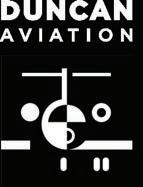
Dec. 31, 2022
Mexico: CVRs and FDRs
Cockpit voice and flight data equipment requirements for turbine aircraft operations (including air taxis) go into force incrementally from Dec. 31, 2020 through Dec. 31, 2022 based on the number of aircraft that are in an operator’s fleet. The rules generally apply to turbine airplanes with 10 or more passenger seats and large turbine helicopters.
Within 12 Months
Feb. 23, 2023
Canada: ADS-B Out Mandate
Compliance with ADS-B Out equipment and operating requirements are planned to become mandatory in the country’s Class A and B airspace above 12,500 feet beginning Feb. 23, 2023. Aircraft must be equipped with an appropriate transponder with ADS-B out capabilities and have antenna capability for broadcast toward space-based ADS-B receivers emitting 1090 MHz extended squitter. This latter requirement can be met either through antenna diversity (top and bottom antennas) or with a single antenna that is capable of transmitting both towards the ground and up towards satellites. z
For the most current compliance status, see: ainonline.com/cc
A Falcon 2000EX EASy came to Duncan Aviation recently and left with a complete interior refurbishment, partial paint, 36-month inspection, Airtext upgrade, LED light upgrades, and cabin PSU (Passenger Service Unit) modification.


The overall lightness of the sidewalls, seats, and floor contrast beautifully with the rich, navy-blue accents in the seats and carpet, combining to make a bold statement.
Learn more and view the gallery here: www.DA.aero/bold-statement

TAG Aviation named Jo Goodall CEO of TAG Europe and Steven Young CEO of TAG Asia. Head of the marketing department at Farnborough Airport since 2007, Elaine Turner has now been appointed global marketing director.
Web Manuals elected Jimmy Bäckström chairman of the board of directors. Bäckström joined the board in 2016 and has served as chief revenue officer at Inriver.
Volato added Keith Rabin as CFO. Rabin has more than a decade of private aviation experience, previously serving as president, co-founder, and CFO of JSX.
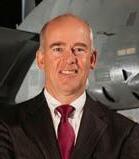
JSSI appointed Tim Elberfeld as CFO and Ken Goodman as chief underwriting officer. Elberfeld, who will also serve as head of information technology, has more than 20 years of finance and accounting experience, previously serving with TransUnion and PricewaterhouseCoopers. Goodman, who had served as CFO for JSSI for six years, has more than 20 years of executive financial experience, also holding senior roles with NetJets and Victoria’s Secret.
The National Air Transportation Association (NATA) promoted Keith DeBerry to COO and Karen Huggard to v-p of government affairs. DeBerry, who most recently was senior v-p of safety and education for the association, previously had a 22-year federal career including as the director of the FAA Academy. Huggard has a background in public policy on Capitol Hill and has spent 15 years as a strategic communications professional.

ATP brought Drew Plisco on board as CFO. Plisco has a 15-year finance background, previously serving as CFO at Holon Solutions and Infutor Data Solutions as well as holding senior positions with Sage Group, First Advantage, and SAP.

Tonya Sudduth was appointed head of U.S. strategy for Bombardier. Sudduth, who joined the business jet manufacturer in 2001 after serving with Koch Industries, had led Bombardier’s Wichita site since 2015, overseeing its expanded
service center, Bombardier Flight Test Center, Learjet production, and Global 5000 completions, among other operations.
Christopher Browne was named the John and Adrienne Mars director of the Smithsonian’s National Air and Space Museum. Browne, who joined the museum in 2017 as deputy director and had been serving as acting director, is a former U.S. Navy flight officer and also has held senior management positions with Ronald Reagan Washington National Airport and Washington Dulles International Airport.
BROWNEKristie Greco Johnson joined NBAA as senior v-p of government affairs. Johnson, who was chief of staff for House Transportation and Infrastructure Committee chairman Peter DeFazio (D-Oregon), brings 25 years of government and political experience to her position, including having previously served as senior advisor for Rep. Jim Clyburn (D-South Carolina) in his leadership roles on the House Democratic Steering and Policy Committee and as Democratic Whip, as well as leading communications at the FAA as assistant administrator.
The Alliance for Aviation Across America added mayor Barbara Tolbert of Arlington, Washington, and Bob Brock , director of aviation and unmanned aerial systems (UAS) for the Kansas Department of Transportation (KDOT), to its board of directors. Tolbert, a pilot, has been involved with aviation businesses for decades and has served as the executive director of the Arlington Fly-In. Brock joined KDOT as the first state director for UAS following 22 years of service with the U.S. Air Force.
The Aeronautical Repair Station Association elected Alison McHugh to its board of directors. McHugh, who is v-p of safety and quality at Feam Aero and on the adjunct faculty at Miami Dade College, formerly served with the National Air Transportation Association.
Chad Farischon joined West Star Aviation as v-p of strategic development. Farischon has more than 30 years of operations and management
experience, previously co-founding and serving as president and partner of Lynx FBO Network.
Nathan de Knock returned to JetHQ as v-p of operations and Steven Pinkerton was promoted to director of operations. He joined JetHQ in 2019 at its Kansas City headquarters after previously working as an FAA-licensed aircraft mechanic. Amelia Schaefer was promoted from market research manager to sales manager, and Jennifer Steakin , who previously served as a research analyst at Amstat for five years, joined the company as a market analyst.
Woodward appointed William John Godsman as corporate v-p of strategy and business development. Godsman has more than 25 years of mergers and acquisition experience, most recently as v-p and global head of business development for GE and before that v-p of business development for GE Aviation.

Matt Shelby joined Avports as v-p of business development. Shelby brings 25 years of executive experience to his new role, specializing in leasing and airport real estate development opportunities for airlines.
Aviation Maintenance Professionals named Chris Hicks director of sales and marketing. Hicks has 30 years of aviation sales and customer support experience with Aviall, Dallas Airmotive, Signature Regional Maintenance Centers, Stage III Technologies, Dallas Aeronautical Services, and Quiet Technology Aerospace.
Satcom Direct (SD) appointed Brian Roos regional director of Asia-Pacific and named Kaviraj (Kavi) Nadarajah regional sales manager, both in the newly opened Singapore office. Roos has 20 years of aviation experience, including airport operations, customer service, flight operations, flight support, and charter management. Nadarajah, who began his 18-year aviation career as a dispatcher for commercial airlines, also previously has held roles with Hawker Pacific and Jet Aviation.
Helicopter Association International (HAI) named Francois Lassale as a special advisor for international initiatives. Lassale is CEO of Heli SGI in Denpasar Selatan, Bali, Indonesia, and formerly served with HeliOffshore.
West Star Aviation promoted Mark Goodman and Scott Haeberle to team lead technicians at its East Alton, Illinois facility and Melanie Medina to NDT lead at its Grand Junction, Colorado facility. Goodman, who is in the Challenger department, joined West Star in 2011 after serving with Midcoast. Haeberle, who is in the Bombardier department, has served with West Star since 2017 and before that was a lead interior technician for Jet Aviation. Medina, who began her aviation career while in high school tearing down engines for Western Skyways, has served with West Star since 2012.
Dallas Aeronautical Services (DAS) appointed Brian Goddard as commercial/regional component repairs sales manager. Goddard, who began his career as an A&P technician, has served with GE, AirReady, and Nordam, as well as other MROs.
Duncan Aviation named Shawn Andrews as airframe manager. Andrews spent 27 years with Kal-Aero and subsequently Duncan (which had acquired Kal-Aero). z
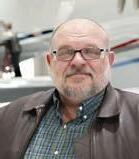
Two aviation safety leaders from the Air Charter Safety Foundation (ACSF)—ACSF president Bryan Burns and v-p of operations Russ Lawton—were presented with the 2022 Flight Safety Foundation’s (FSF) Business Aviation Meritorious Service Award. It was given to the duo for their contributions to business and charter aviation safety at the 67th Business Aviation Safety Summit in Savannah, Georgia. “The ACSF-administered aviation safety action program has made a huge safety difference in Part 135 and 91 operations, all thanks to the vision and leadership of Bryan Burns and Russ Lawton,” said FSF president and CEO Hassan Shahidi, who presented the award.
JSfirm recently awarded an Aviation Mechanic Student scholarship to Jonathan Roberts, a retired veteran who is working full time and studying aviation maintenance technology at Columbus State Community College in Ohio. He is a member of the Central Ohio Chapter of the Project Management Institute, AOPA, EAA, and Professional Aviation Maintenance Association.
“Some peers in the industry have been accepting basically a blanket waiver from whoever is bringing the airplane to them, saying “we as the maintenance provider are accepting whatever you are saying and we’re not doing any due diligence, we’re just signing and doing the work,” Paddock said. “That’s not the legal advice we’ve been getting.”
Some of the aircraft in Jet Aviation’s care at its facilities in Basel and Geneva, Switzerland, as well as Vienna, Austria, are in the process of being sold. “Either a bank will repossess an airplane or a Russian owner will sell,” explained Paddock. “We’re trying, to the degree that we can, to facilitate a legitimate transaction amongst a Russian seller and a non-Russian buyer, really to address the fact that otherwise, this airplane will sit in our facilities and nobody is paying for rent.”
JAMES HOLAHAN (1921-2015), FOUNDING EDITOR, WILSON S. LEACH, FOUNDER & CEO
EDITOR-IN-CHIEF – Matt Thurber
NEWS EDITOR - AIN PUBLICATIONS – Chad Trautvetter
EDITOR AIN MONTHLY MAGAZINE – Kerry Lynch
SENIOR EDITORS – Charles Alcock, Curt Epstein, Gregory Polek – Air Transport, International Show Editions, Jerry Siebenmark
COPY/SOCIAL MEDIA EDITOR – Kait Wilson
David Donald – Defense, Mark Huber – Rotorcraft , Jennifer Leach English, David Jack Kenny – Safety Gordon Gilbert, Richard Pedicini, James Wynbrandt
PRODUCTION MANAGER – Martha Jercinovich
GRAPHIC DESIGNERS –John A. Manfredo, Grzegorz Rzekos
DIRECTOR OF VIDEO – Ian Whelan
CHIEF OPERATING OFFICER – Dave Leach
VICE PRESIDENT SALES & MARKETING – Karl H. Elken

ASSOCIATE PUBLISHER – Nancy O’Brien
ADVERTISING SALES
Michelle James – Midwestern U.S., Western U.S./Western Canada/Asia Pacific, +1 (520) 343-0236 Nancy O’Brien – Events, +1 (530) 241-3534
Joe Rosone – Mid-Atlantic U.S./Southeast U.S./Caribbean/Brazil, +1 (301) 693-4687 Diana Scogna – Europe/Middle East, +33 6 62 52 25 47
Victoria Tod – Northeastern U.S./Eastern Canada/Great Lakes U.S./United Kingdom, +1 (203) 733-4184 Yury Laskin – Russia, +7 05 912 1346
AUDIENCE DEVELOPMENT MANAGER – Nicole Bowman
MARKETING AND CLIENT SERVICES MANAGER – Lisa Valladares SALES AND MARKETING COORDINATOR – Adam Brandwein
SOCIAL MEDIA MARKETING – Zach O’Brien SALES ADMINISTRATOR – Cindy Nesline
DIRECTOR OF FINANCE & HUMAN RESOURCES – Michele Hubert ACCOUNTS PAYABLE – Mary Avella ACCOUNTS RECEIVABLE – Bobbie Bing
PADDOCK PRESIDENT OF JET AVIATIONUnder EASA regulations, the service provider is allowed to do preservation maintenance on the aircraft as they sit, but nothing that would add value to the airplane. Paddock stated that those aircraft will likely remain grounded for some time to come and that the situation his company is seeing is just a small subset of what the industry is experiencing. “We’re working with EASA, the FAA, and the Swiss authorities on how we’re able to maintain these airplanes in the future,” he said, adding the matter was a topic of discussion during a recent board meeting of the General Aircraft Manufacturers Association for those seeking further clarity. z
U.S. HEADQUARTERS 214 Franklin Ave., Midland Park, NJ 07432, +1 (201) 444-5075
Advertising Inquiries: +1 (201) 345-0085, adsales@ainonline.com Circulation Inquiries: +1 (201) 345-0085, subscriptions@ainonline.com
WASHINGTON, D.C. EDITORIAL OFFICE: Kerry Lynch (business aviation): klynch@ainonline.com, Tel: +1 (703) 969-9195
EUROPEAN EDITORIAL OFFICE: Charles Alcock: calcock@ainonline.com, Tel: +44 7799 907595
Wilson Leach, Dave Leach, Jennifer Leach English, Karl H. Elken, Matt Thurber, Michele Hubert, Nancy O’Brien
Aviation International News (ISSN 0887-9877) is published twelve times per year (monthly). Periodicals postage paid at Midland Park, N.J., and additional mailing o ces. Postmaster: Send address changes to Aviation International News, P.O. Box 8059, Lowell, MA 01853 USA.
Aviation International News is a publication of The Convention News Co., Inc., 214 Franklin Ave., Midland Park, NJ 07432; Tel.: +1 (201) 444-5075. Copyright © 2021 All rights reserved. Reproduction in whole or in part without permission of The Convention News Co., Inc. is strictly prohibited. The Convention News Co., Inc. publishes Aviation International News, AINalerts, AIN Air Transport Perspective, AINtv, Business Jet Traveler, BJTwaypoints, ABACE Convention News, Dubai Airshow News, EBACE Convention News, Farnborough Airshow News, FutureFlight.aero, HAI Convention News, LABACE Convention News, MEBA Convention News, NBAA Convention News, Paris Airshow News, Singapore Airshow News, Mobile Apps: Aviation International News; AINonline. PUBLICATION MAIL AGREEMENT NO. 40649046 RETURN UNDELIVERABLE CANADIAN ADDRESSES TO: PITNEY BOWES INTERNATIONAL MAIL, STATION A, P.O. BOX 54, WINDSOR, ON, N9A 6J5, returns il@imex.pb.com.
For feedback, letters to the editor, or other editorial needs, please contact AIN’s Editors at ainedit@ainonline.com







